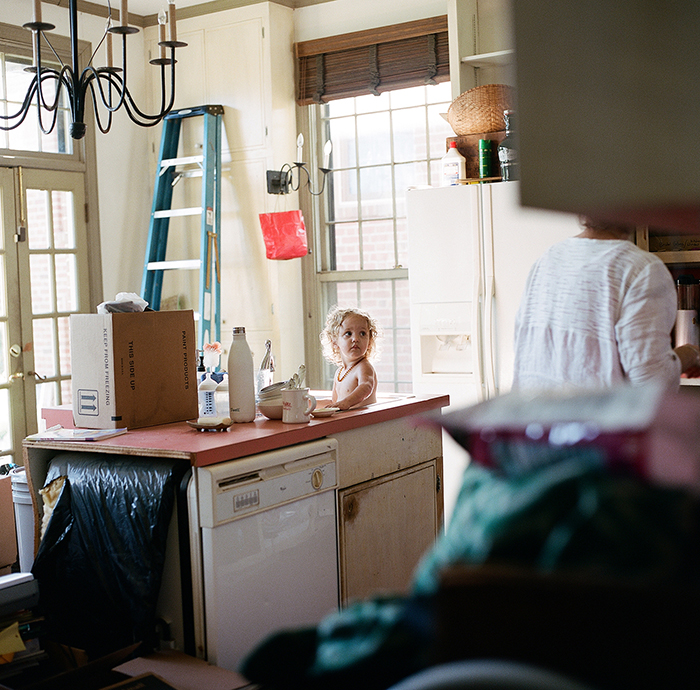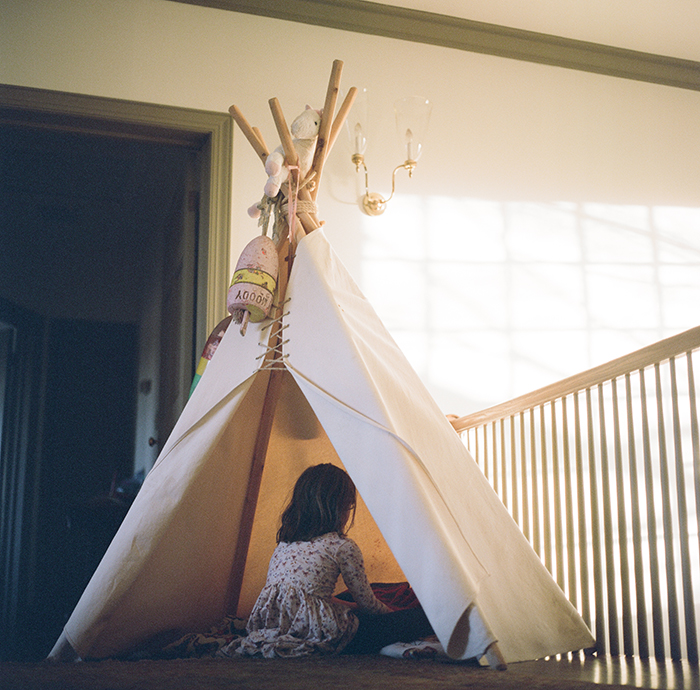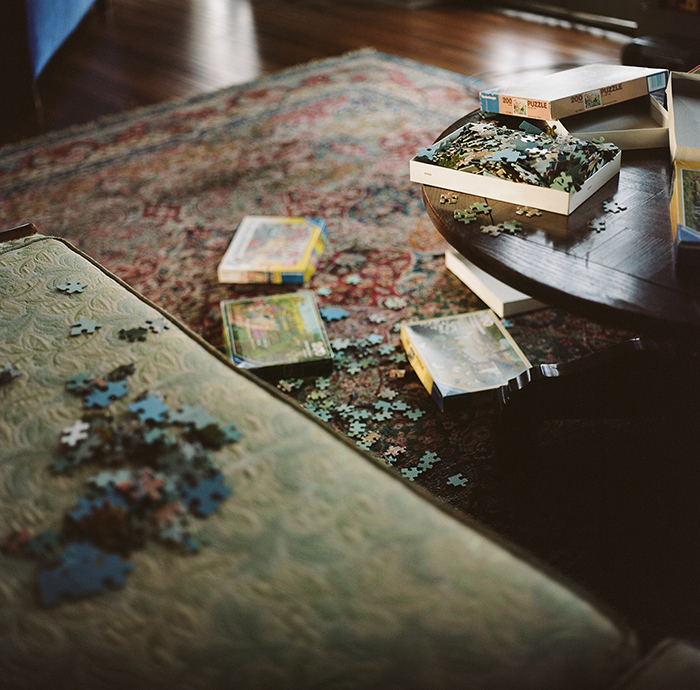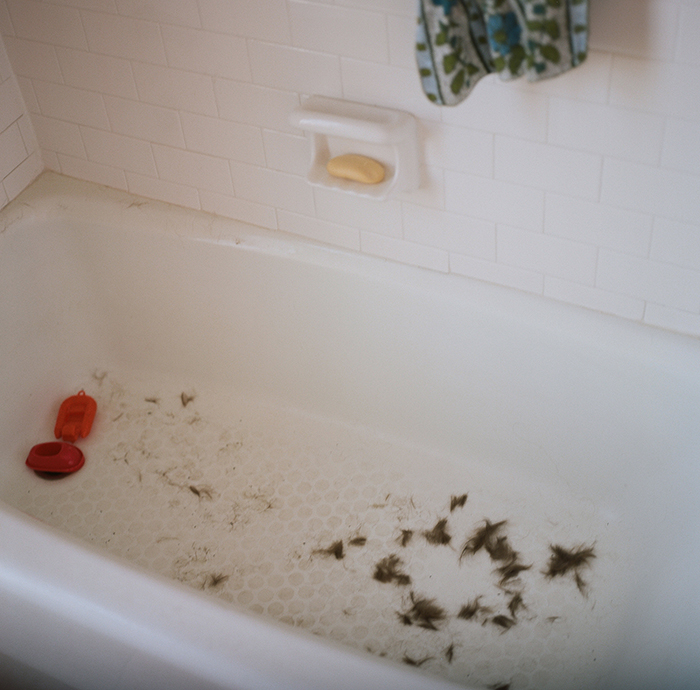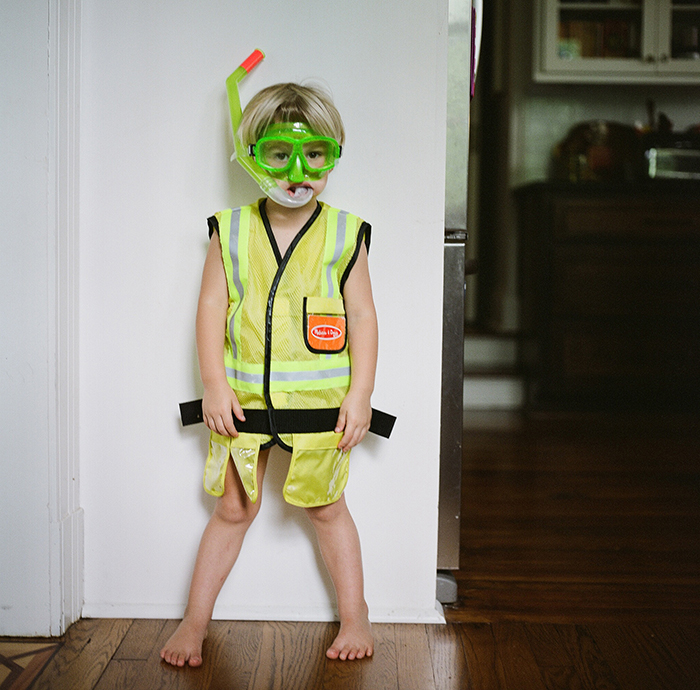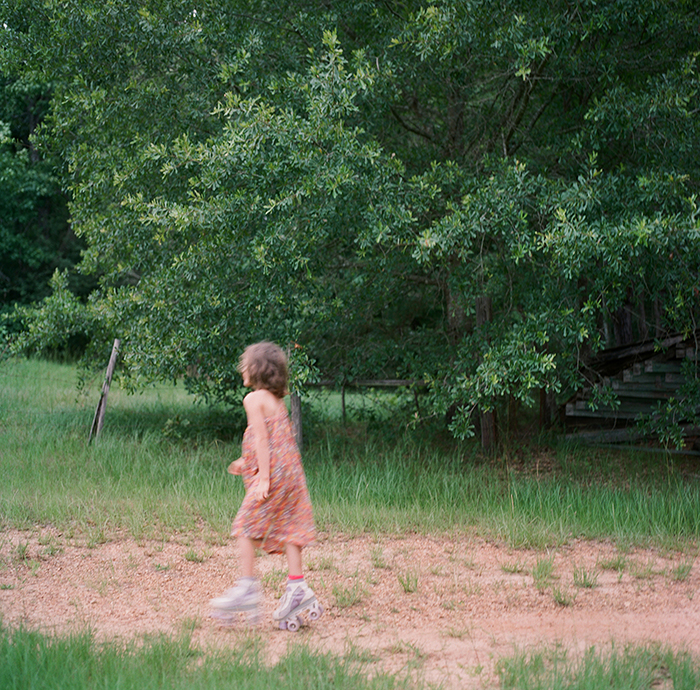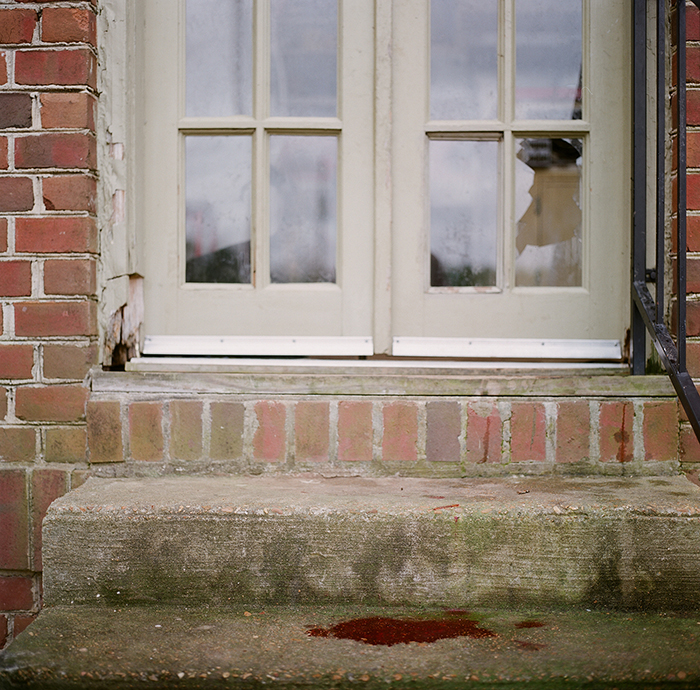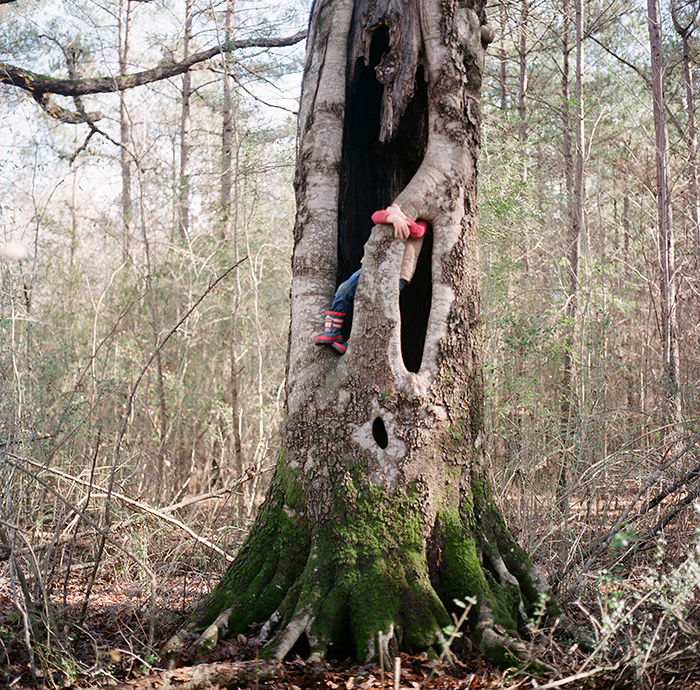-
18 Wonderful Things in Los Angeles Last Week
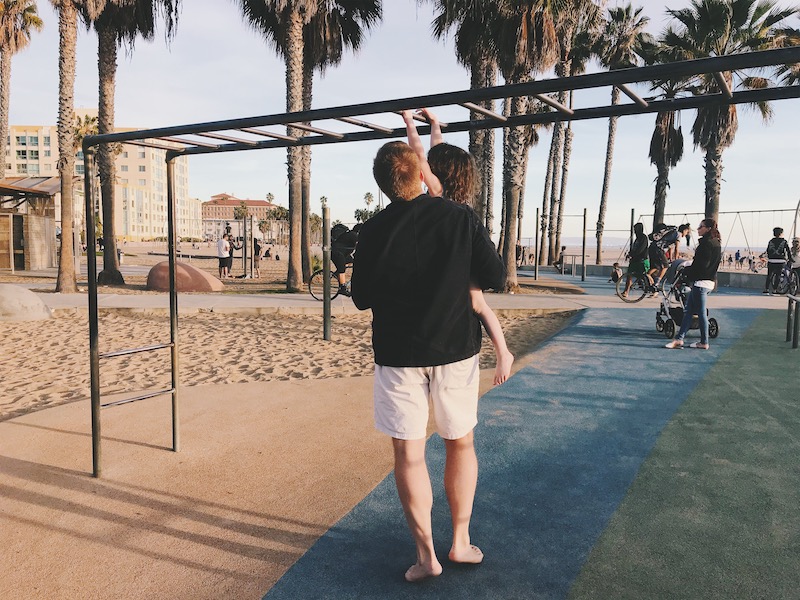
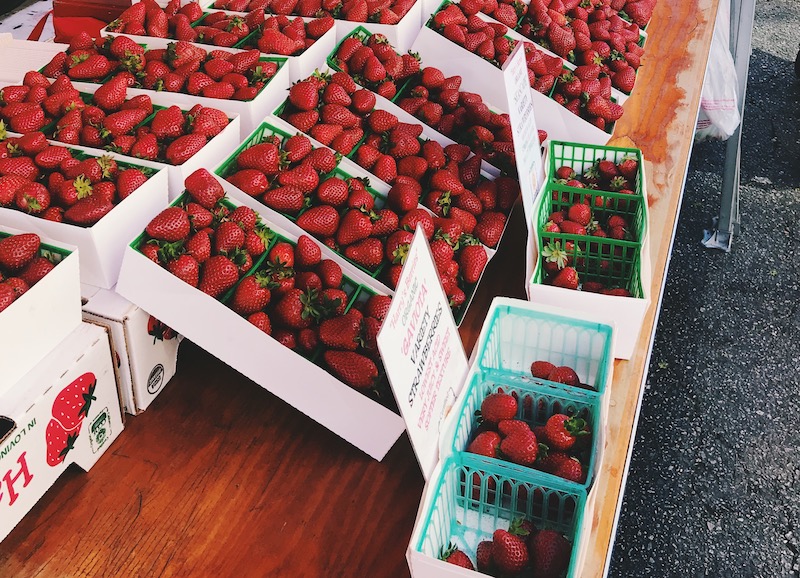

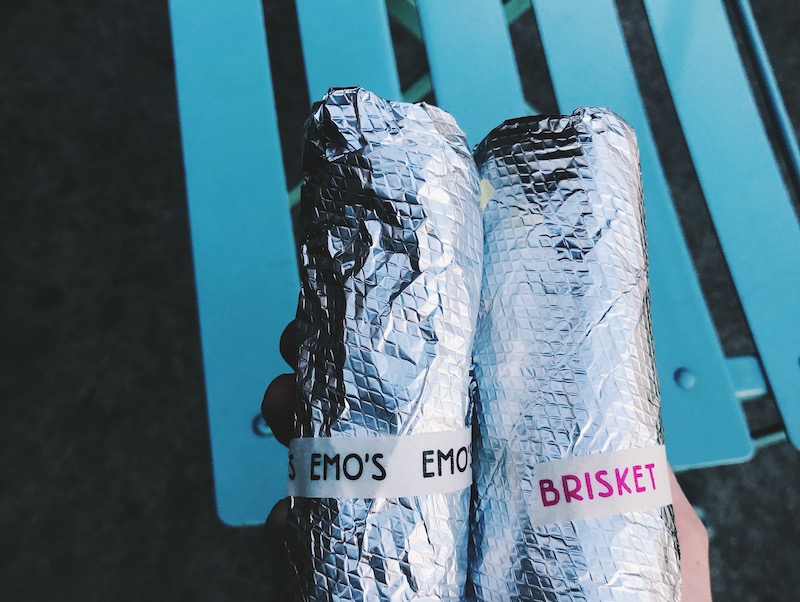

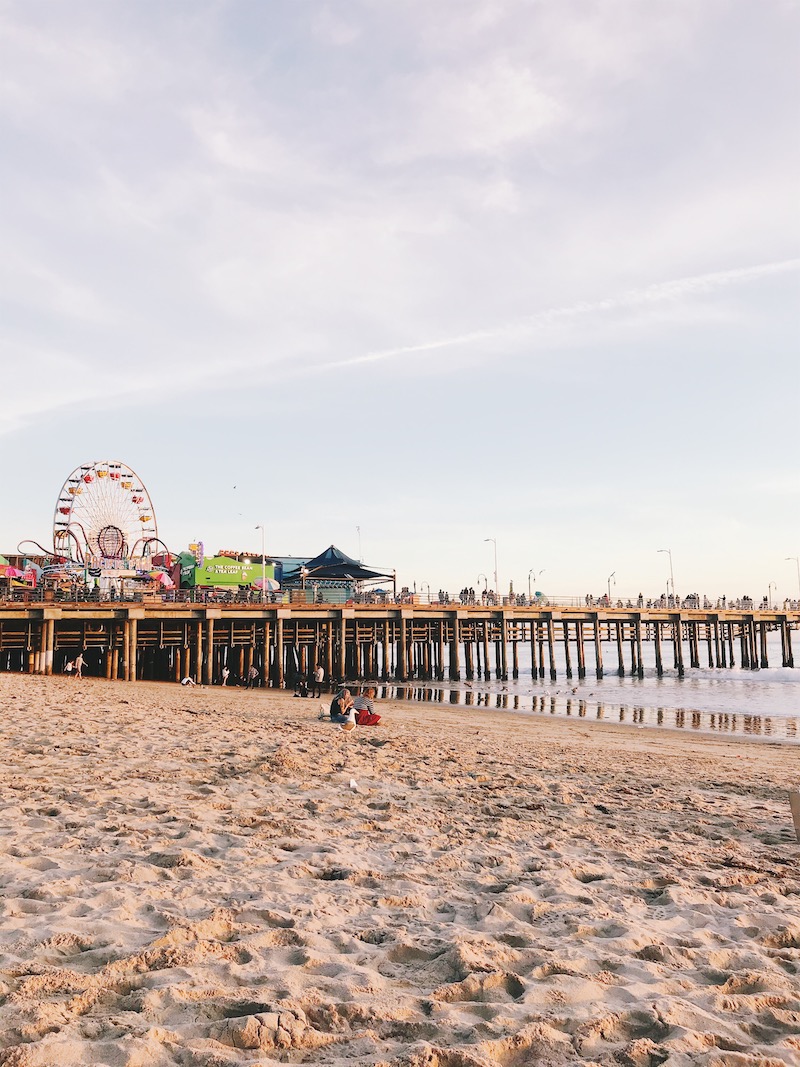
A few best things from California last week. Right now I’m contemplating ordering food-safe five gallon buckets and how to go about filing them with beans and rice, so this is a nice thing to think about alongside. (Though if I read one more “bro goes grocery shopping” coronoavirus prepper article, well, I will be forced to write my own.)
So the plan was this. My sister volunteered to take the older two girls to Disneyland with her husband. First it was one day. Then they decided to go for two. Meanwhile we planned to settle ourselves with the two younger girls in Santa Monica. Then we picked the older girls back up for four more days after their Disney time. We rented a car and drove back into downtown several times, but always at off-hours to avoid the worst of the traffic.
Once it was decided that the older girls were going to Disneyland, that it was really happening, we turned our attention to playing catch up. As of last month, they hadn’t seen Cars, Toy Story, Snow White, Bambi…so many things!
We homeschooled that stuff and caught. up. It was really fun. I’m not sure we would have even tried to catch up at all, had not Disney serendipitously opened the vault at the beginning of this year, allowing unlimited downloads on (nearly) unlimited devices through Disney+. I couldn’t believe I could download Mickey cartoons from 1940s as a way to learn about Pluto.
Was it ok that you didn’t see Lion King? I asked them later. -Yes. It was fine, they said.
But I’m so thankful we didn’t try to do Disney ourselves with all four kids. And I’m so thankful my sister and her husband were willing to be excited Aunt and Uncle and take the girls. They just modeled how fun it could be for Joe and I. It was an incredibly special and memorable experience for the girls.
As part of the trip prep, I spent a strange amount of time looking for dresses that said *festive special* and *could be worn to other occasions.* I had the best luck with selection at Dillard’s. In case you happen to be in the market as well.
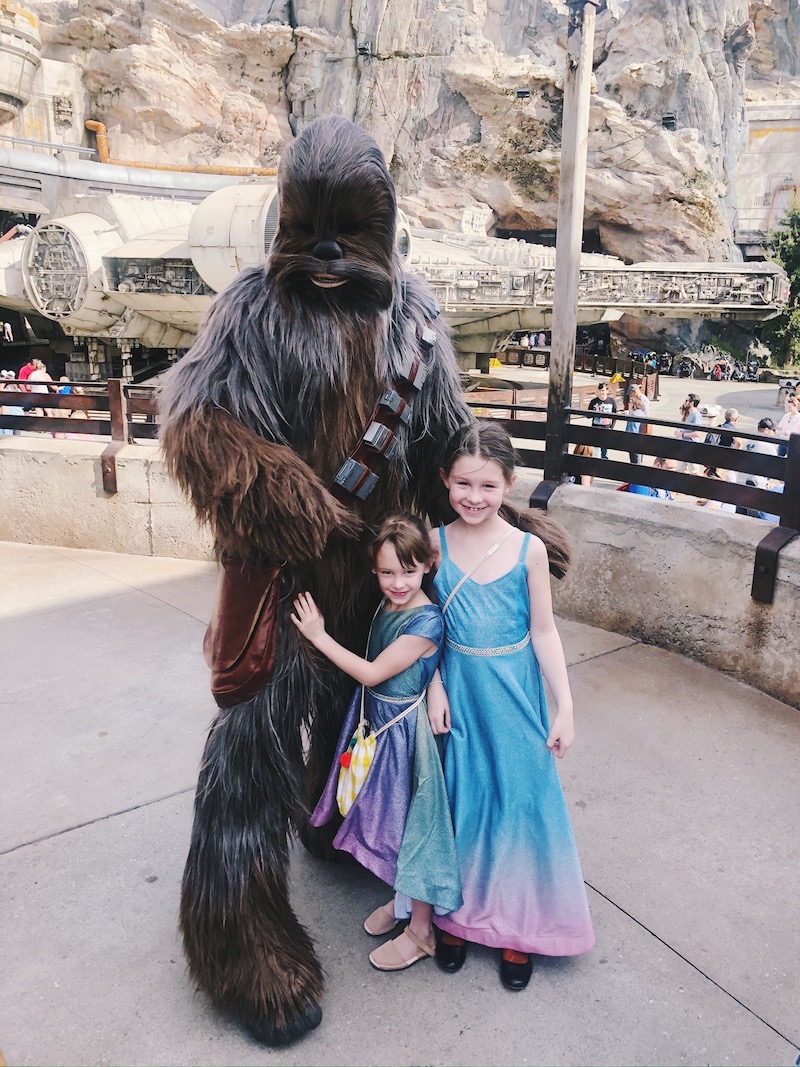
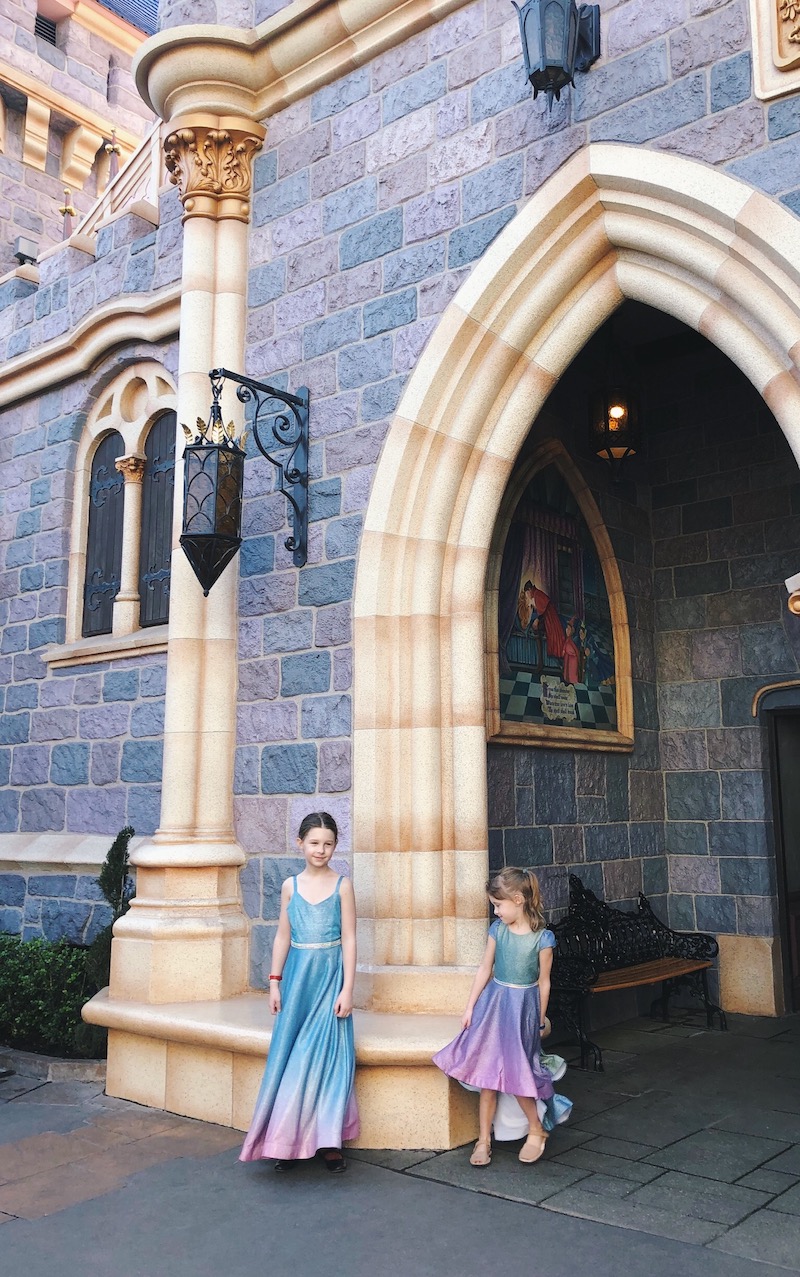
Here’s an itinerary scheme that I’m definitely going to use again in the future: my sister and I and our husbands had a shared note using the Notes app on our phones for weeks before the trip. This helped me suss through the itinerary and not feel so in-my-head like I sometimes do when travel researching. My sister had lots of good ideas, naturally, and this was an easy way for her to get them all to me concisely. Plus we could reference the note whenever one of us forgot what was coming next. Another tip: we wanted to use street parking around our hotel to avoid the steep valet fees. My sister suggested using the app SpotAngels which helped me find afternoon or overnight meters in convenient locations.
in no particular order…
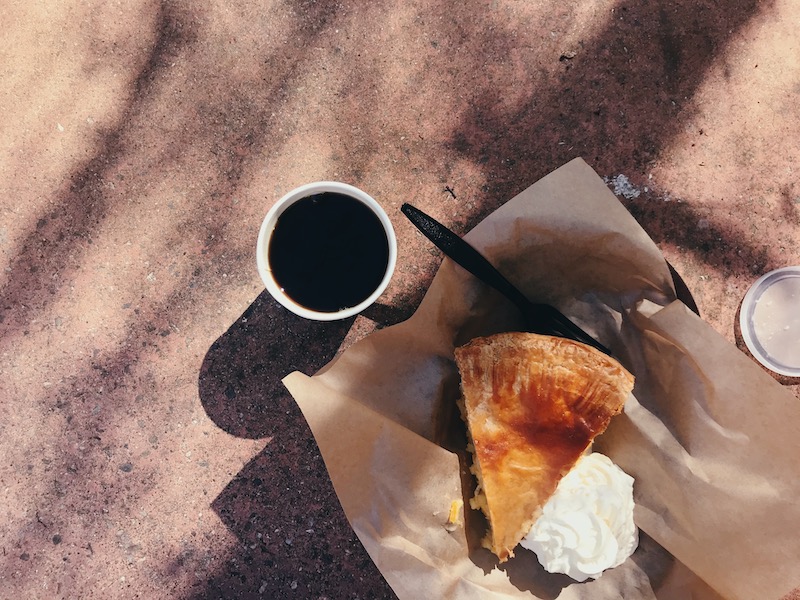 1 Meyer lemon pie in the park with Noelle. Noelle and her son and I met in the pleasantly dusty park at the base of the Griffith Observatory where there is a tavern that serves pie with fresh whipped cream on the side. Joe and the older girls hiked up on the hill to the Observatory without water, in the sun, only to find it closed, but that’s a story for another time.
1 Meyer lemon pie in the park with Noelle. Noelle and her son and I met in the pleasantly dusty park at the base of the Griffith Observatory where there is a tavern that serves pie with fresh whipped cream on the side. Joe and the older girls hiked up on the hill to the Observatory without water, in the sun, only to find it closed, but that’s a story for another time.It seems as if in LA the traffic is bad, but once you get to a destination, parking available everywhere. A nice thing. (Noelle and I met up in 2012, and 2017 too!)
2 Noelle suggested getting notebooks for the girls at Muji in Santa Monica. Now, we have a Muji in Boston. And we several times we have bought notebooks for the girls there. But I frankly have no idea where those notebooks are, and why am I being parsimonious about notebooks? What a fun thing to buy on vacation.
3 Here’s what’s really fun to put in vacation notebooks. Scratch-n-sniff stickers that smell like hot chocolate from In-and-Out. You can put them in while you wait for your food, so excited for shakes and fries and yet smelling hot chocolate, while sitting in the sun.

4 The Santa Monica farmers market felt otherworldly. The trays of strawberries covering the table felt like virtual reality. Surely they couldn’t be this beautiful and edible and real? I thought of the pirate captain in Pirates of the Caribbean who longed only reverse the curse and eat an apple. We ate mid-winter, post-curse strawberries. And we peeked into the crates and crates of vegetables labeled to head to the city’s best restaurants.
5 I loved all the “gentle handle with care!!!” signs propped around the ripe avocados. The precious babes of the market.
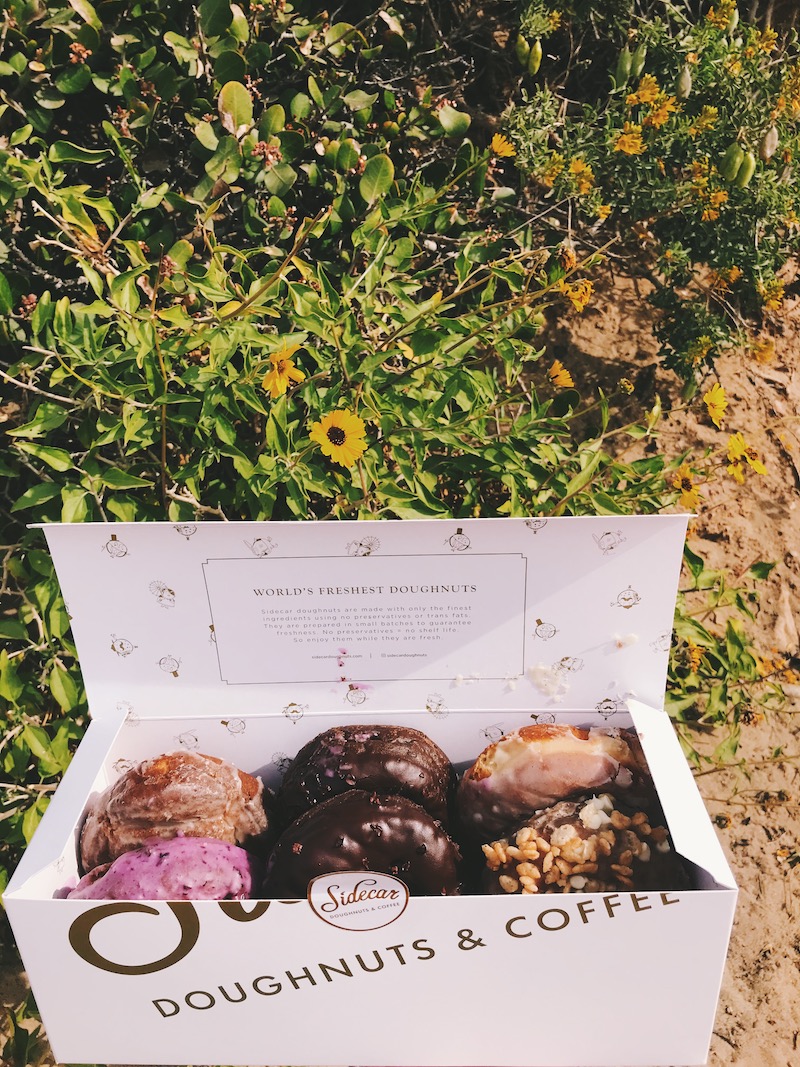

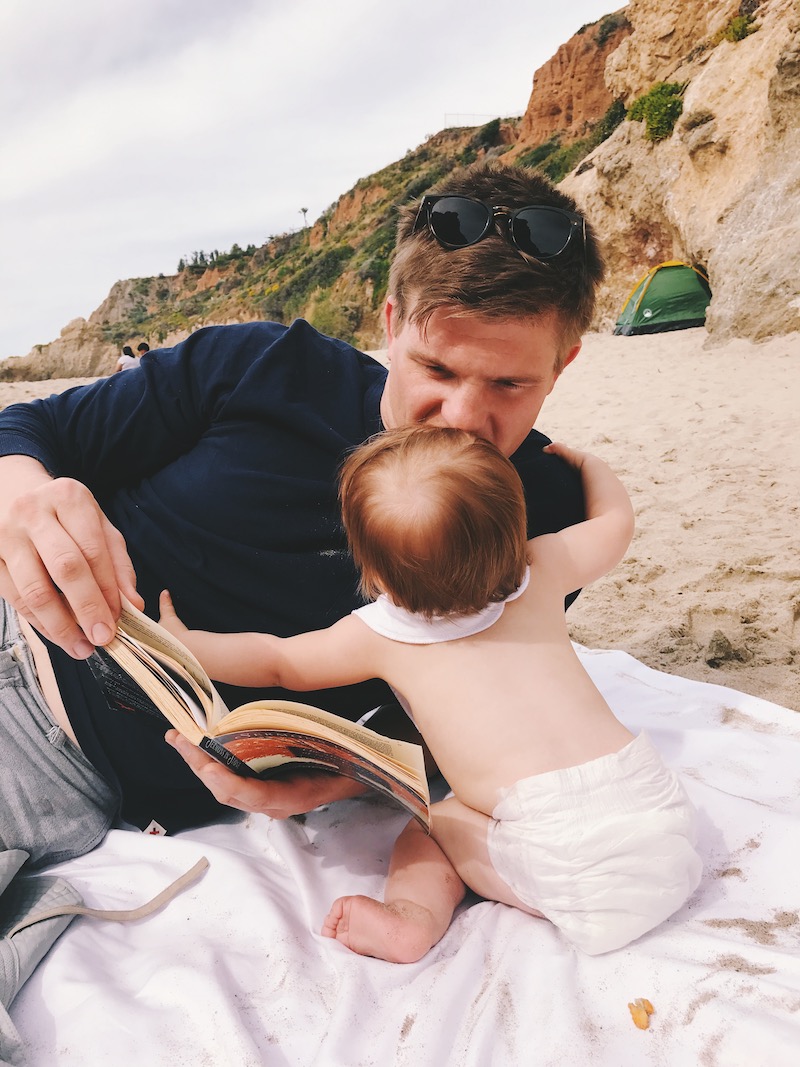

6 Artisan doughnuts are safely a nationwide thing at this point, but having them within a drive of the beach like Sidecar Doughnuts does is really something else. Their coffee is excellent as well which was lovely because the baby woke up between 3-6am PST every morning. Over the years people have asked me if the babies sleep well when traveling and no, they never do. It’s not really the point of travel, I’ve found, to hope to sleep well. Set that idea aside and it won’t bother you.
7 With doughnuts at our side we alighted on El Matador Beach for a morning. So gorgeous, a beautiful beachfront with giant stone sculptures strewn across it. I expected Ariel, with fins, or her sisters (whatever happened to her sisters?) around every corner. We had no problem finding parking in the tiny beach lot because we were there so early! Grateful to Ashley’s perennial favorite travel posts for this idea.
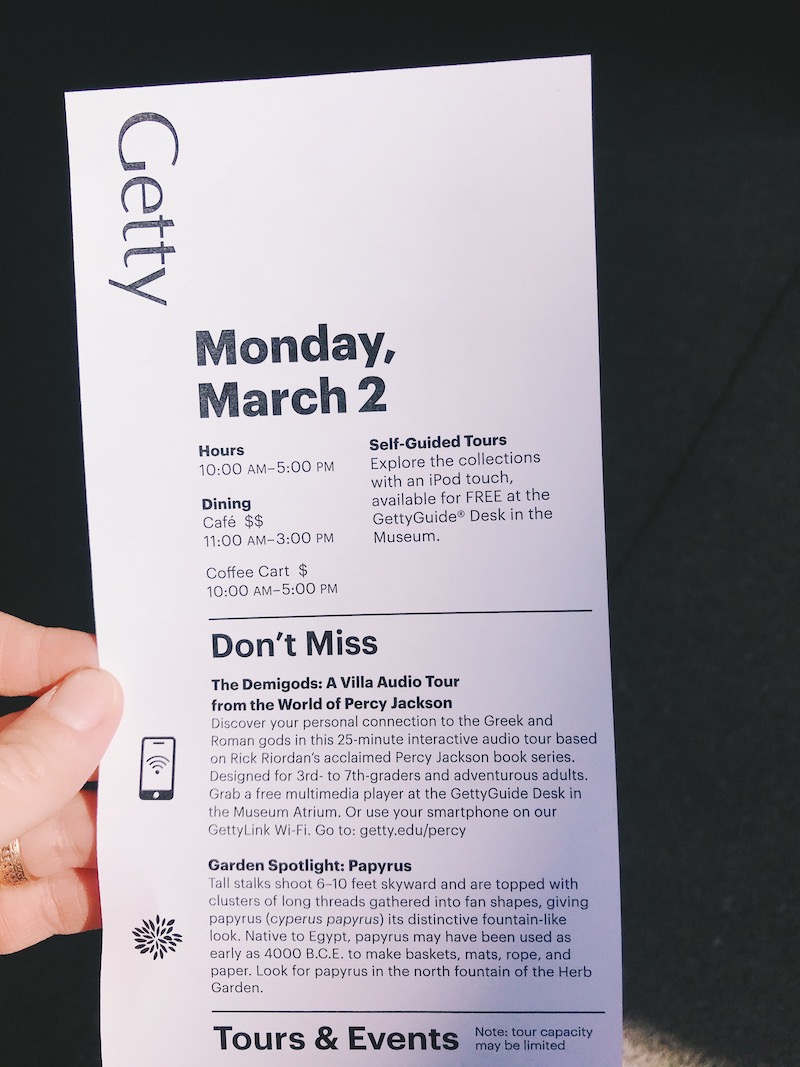
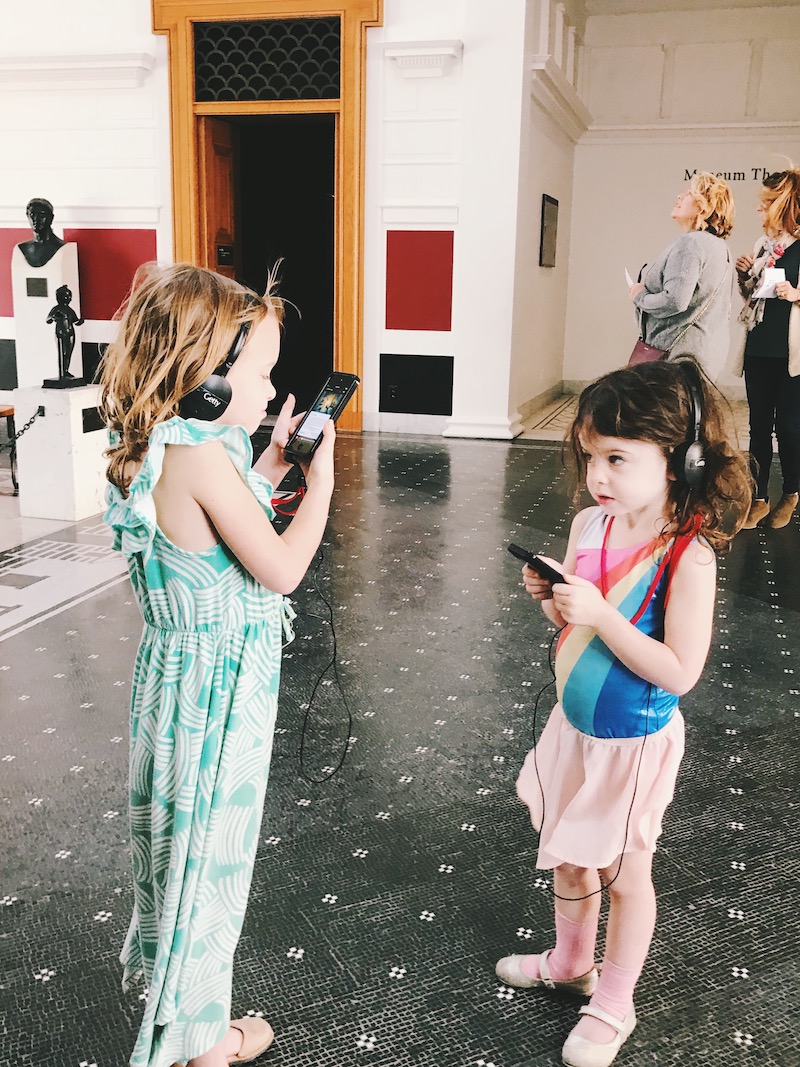

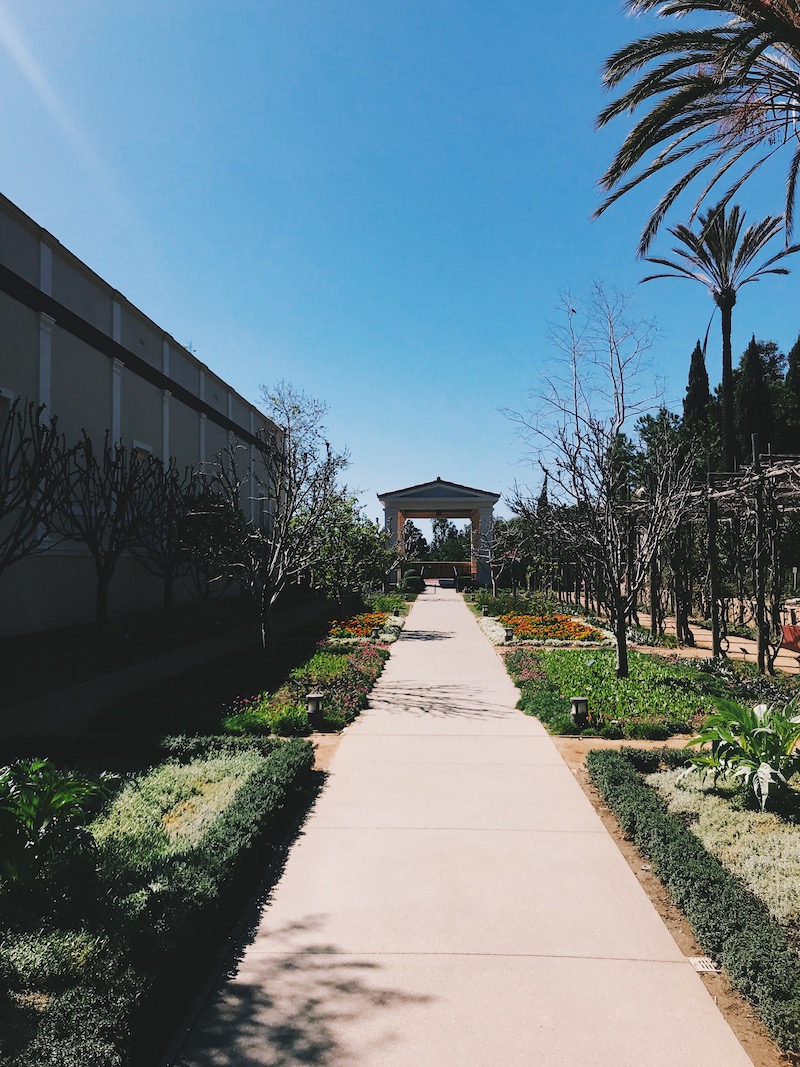
8 On this trip we visited the Getty Villa for the first time. The Villa is modeled almost exactly on a Roman villa excavated in Herculaneum. It is framed by a modern building and has incredible views of the ocean. You are supposed to make free reservations ahead of time (we didn’t, and it was fine on a slow Monday), and parking costs $20.
9 The girls were thrilled by their Percy Jackson themed audio guide. And I was super impressed with how fun their their family activity room with Greek shadow play and look-alike ancient ceramics for coloring.
10 Brown rice porridge at Sqirl. But you probably knew I’d say that. I have to try it at home!
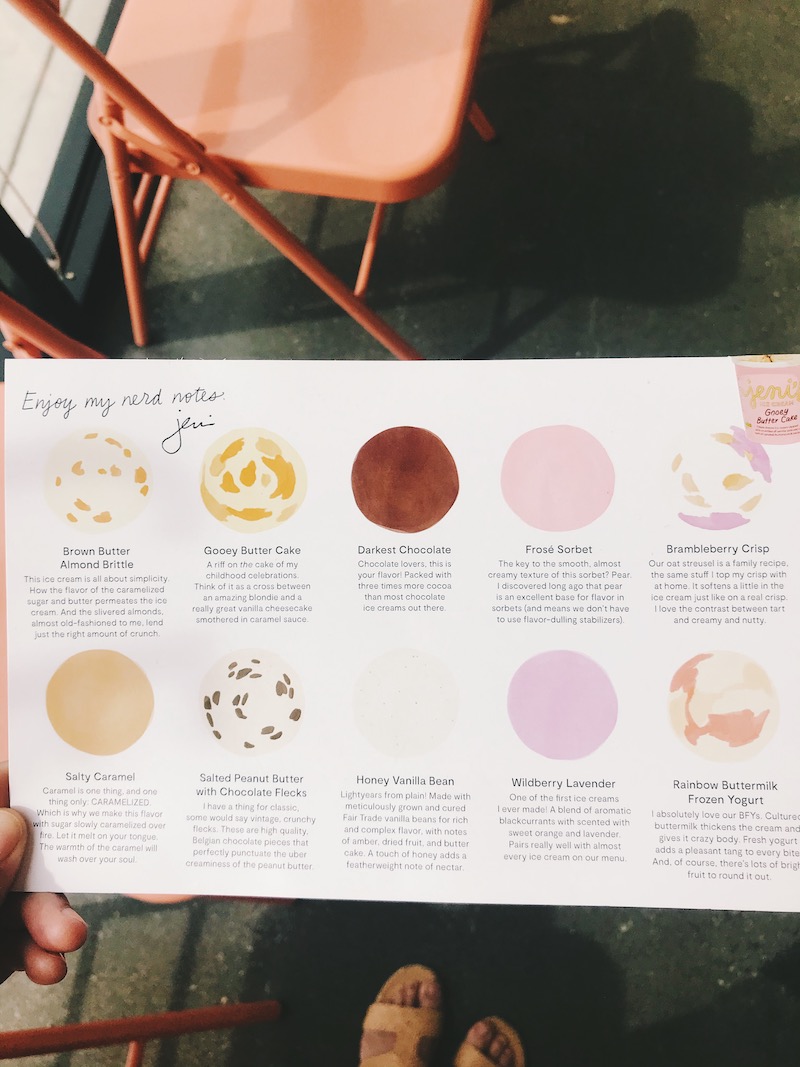
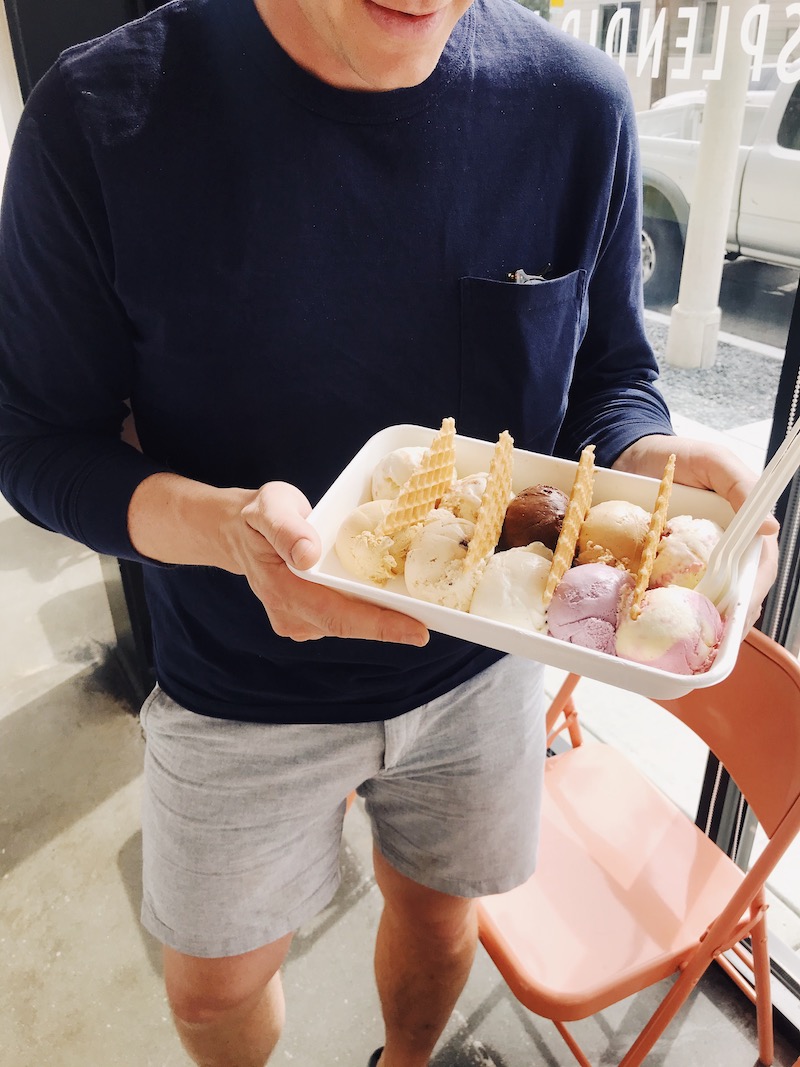
On one of the days that the older girls were at Disney, we decided to visit the rather incredible retail of Venice. Abbot Kinney has become startlingly hip, but the Rose Avenue area is still calm and pleasant and Gjusta takeout is just around the corner from the shops mentioned below.
11 Here it is 2020 and I’ve never been to a Jeni’s Ice Cream! This was such a treat. They have a tasting tray available, with the flavors selected and annotated by Jeni herself. I would not have ordered the brown butter almond brittle on my own but it was my absolute favorite!
12 After visiting Rudy Jude, Parachute, and Jeni’s, we continued our allstar stroll down Rose Ave to Moon Juice. I loved the vibes in there, and it wasn’t just the fungus-based adaptogens in the air. All the lattes have a coconut-almond milk blend base with cacao so they are incredibly delicious, moon dust or not (moon dust doesn’t hurt though!).
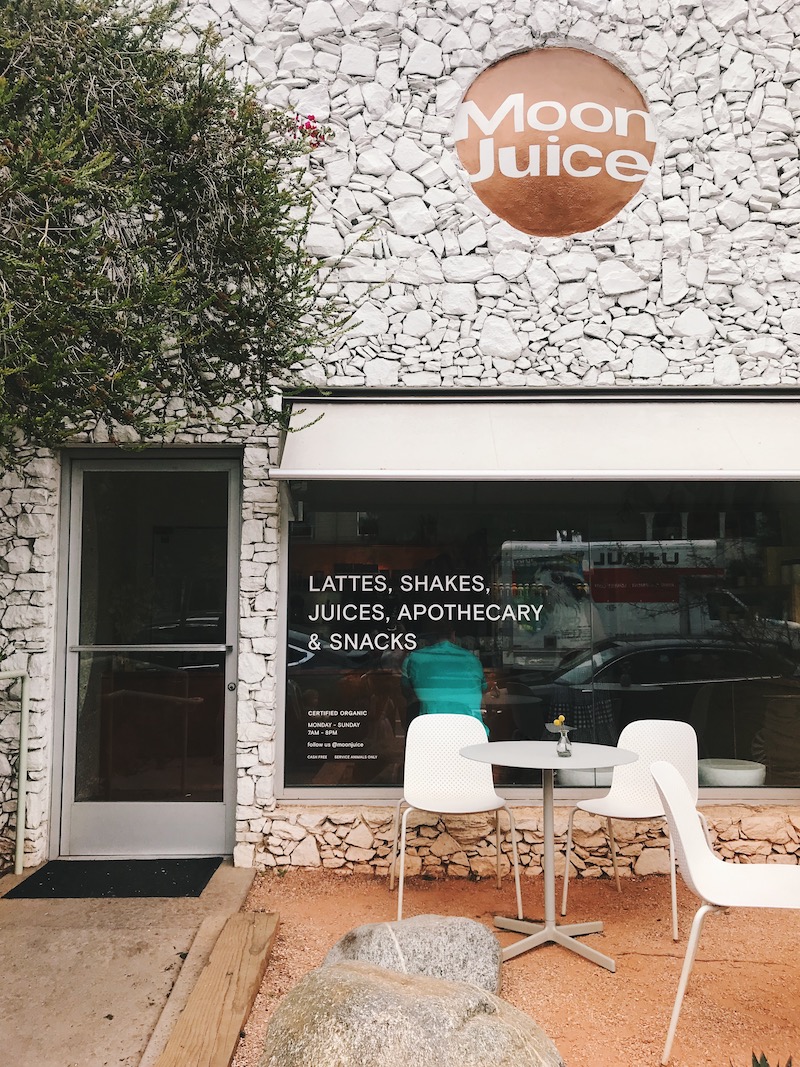
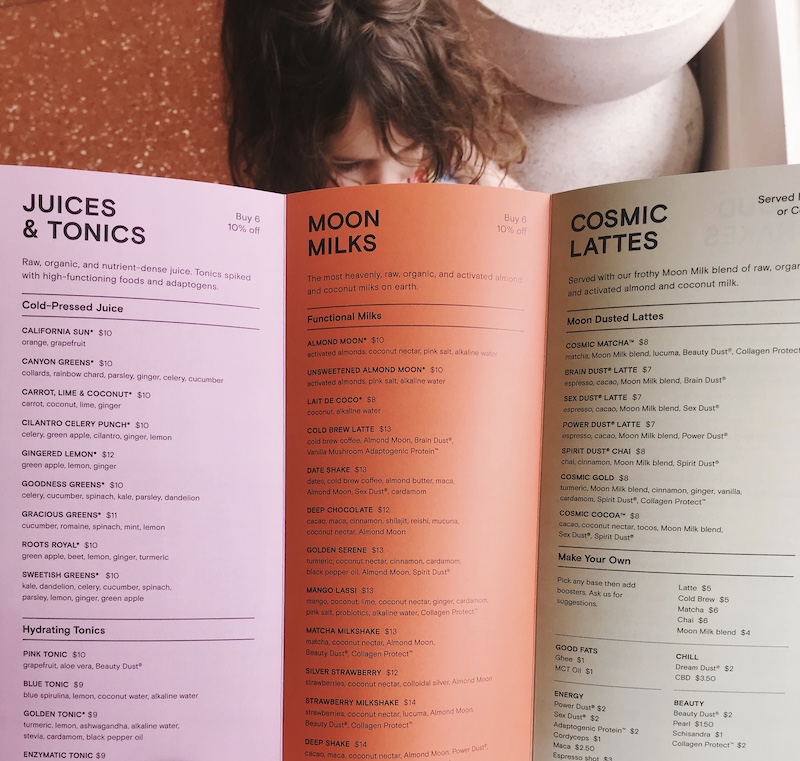
13 We bought snacks—-fruit, kefir, avocados (precious!), bread and extremely good butter—for the hotel room at the farmer’s market. We also bought things like cheetos for the pool, and those cheddar-and-club cracker packets for random times in the car. Grocery snack novelties are so satisfying when you’re traveling.
14 Without a highchair, every morning I would put a towel down and feed Esme on the floor, which allowed me to see the amazing way she prefers to sit away from her plate and reach, yoga-style, over to the food.
15 We stayed relatively true to our time zone and often tucked into bed with books around 8pm. Once or twice we caught the sunset on the beach before heading to bed.
16 The girls played with the built-in gymnastic equipment at “muscle beach” in Santa Monica. They love monkey bars and gymnastic bars at home, so it was fun to be out with the workout adults in the morning and doing our thing together.
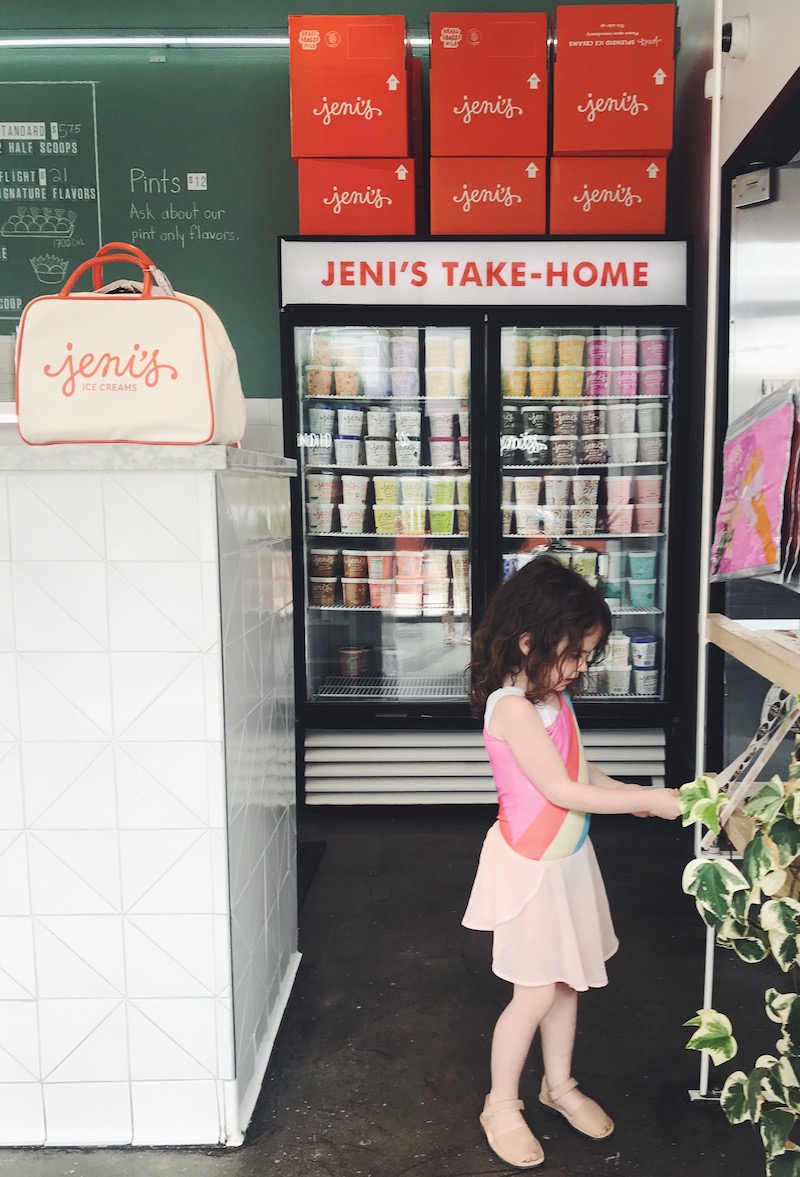
17 I packed minimally for all of us but Alma ignored everything I brought and wore the same outfit every day. It was a brilliant move. She fit right in and it’s an outfit she tries to wear at home but, old house in the winter in Vermont, it never works.
18 My sister and her husband babysat all four girls one morning so Joe and I could go to a museum and out to lunch. It was a time filled with lots of silent contemplation and reading all the paragraphs on the wall at the art museum, which is something I dream about doing on family-museum-visits. When we came back to their apartment they’d gone out to a playground, and so we sat on their porch and read our books. When they came back, her husband made margaritas and we ate take-out from the taco stand down the street and watched Jeopardy together. An amazing memory.
-
September
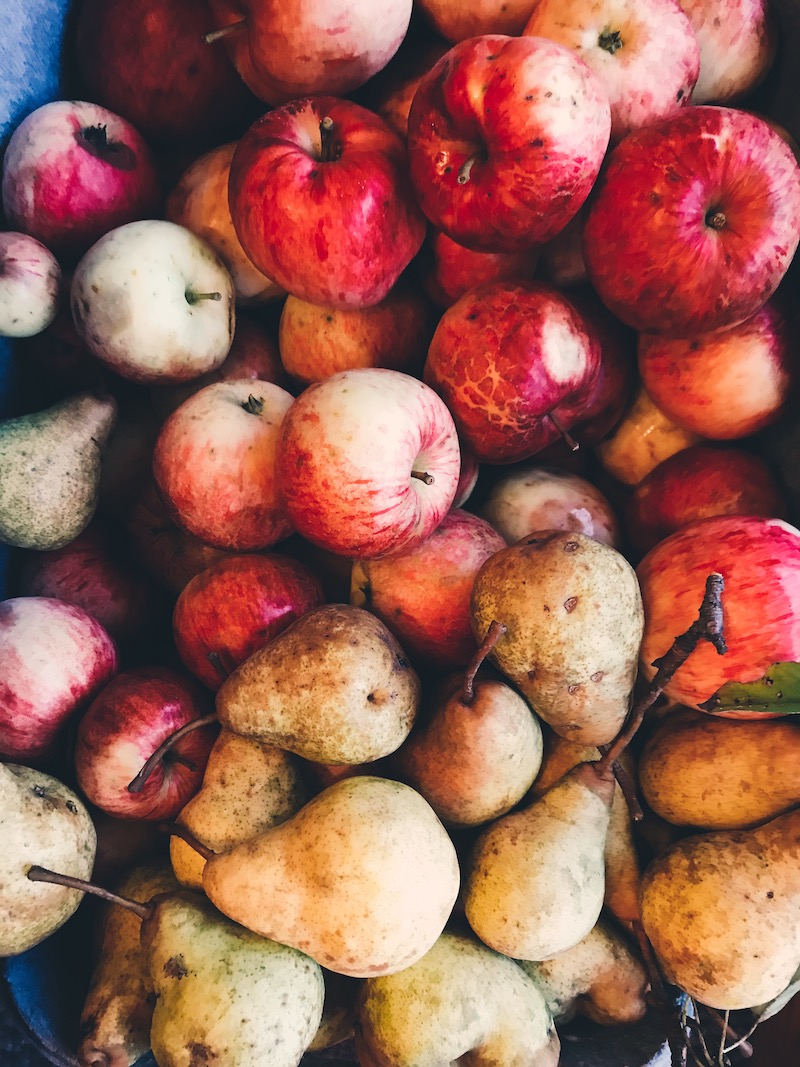

September was a cartload of treasures pulled by steady mule over the hill of suddenly bone chilling nights–the flannels did not make it onto the beds until the end of the month, replacing terribly smelly summer sheets–and creaked slowly to rest in the sunny afternoons.
The yard became strewn with crimson leaves. A sewing machine was finally settled on a desk cut to size, threaded with red thread and ready for projects. Maple soft-serve at the state fair, and the last bouquets of a flower subscription. Properly sized boots and warm tights were ordered and arrived in boxes. Woe to the generation (’tis mine) that killed off the storefront shoe shop where one could have (once upon a time!) walked in with three children and walked out with three pairs of shoes that fit. My due punishment are boxes of wrongly sized, misunderstood pairs of shoes, return to sender.
Old sweaters and cozy layers were pulled out of the closet to be washed and handed-down. I emptied drawers of one-size-too-small wardrobes, tsked the abundance of it all, and tucked these back into the very same boxes to be passed down next season.
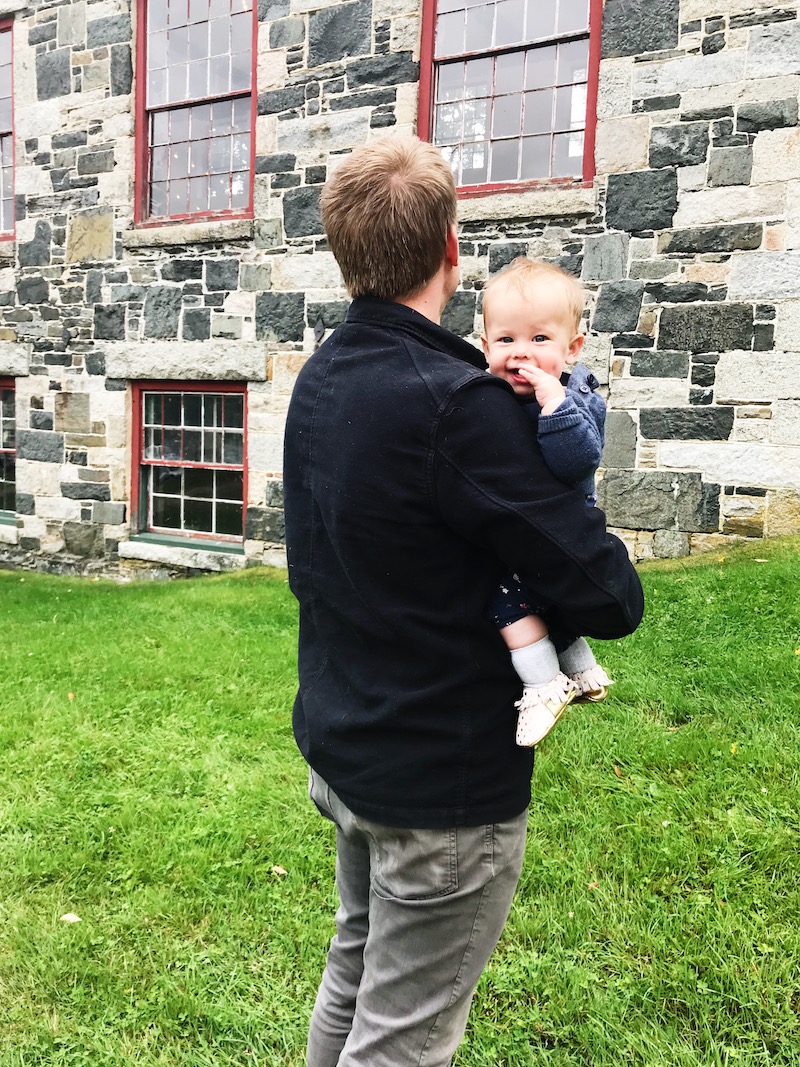
Esme turned six months old and in the blink of a midnight chime, I realized I was no longer carriage, only pumpkin, and needed to sleep train her for our sanity. She began eating mashed food of all sorts with gusto. I offered these foods to her as a perplexed dining companion, entirely caught off guard by her early interest.
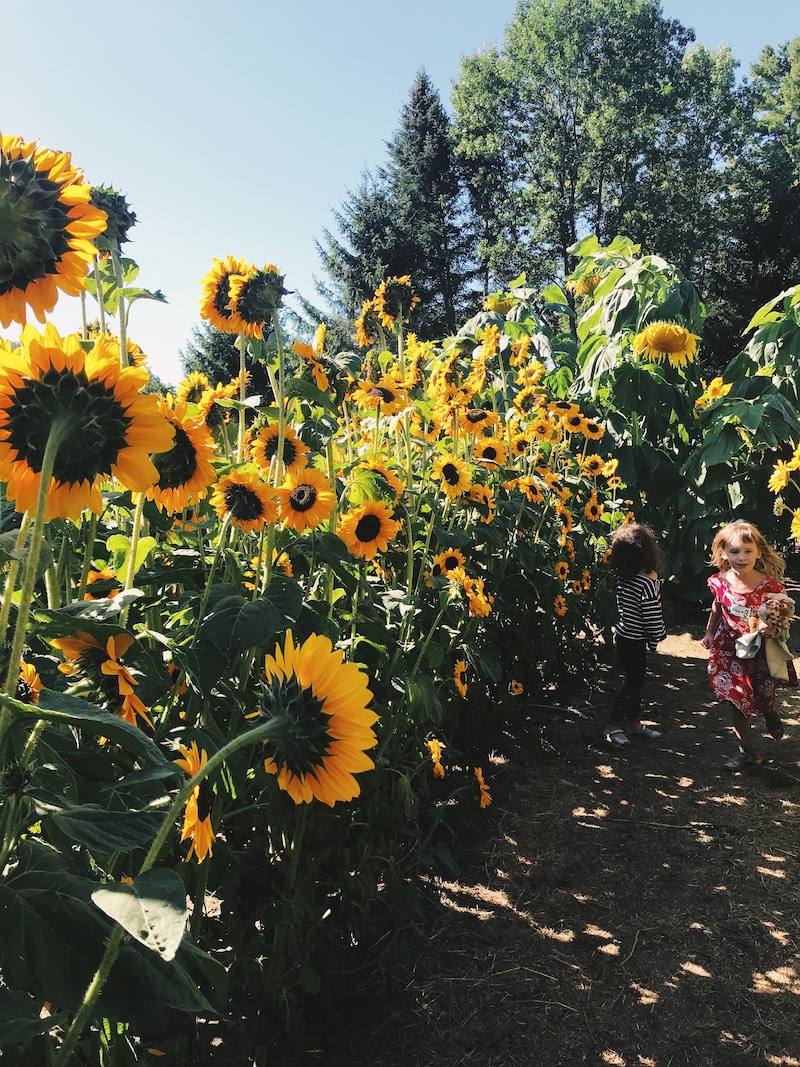 Bright and shiny sunflower maze.
Bright and shiny sunflower maze.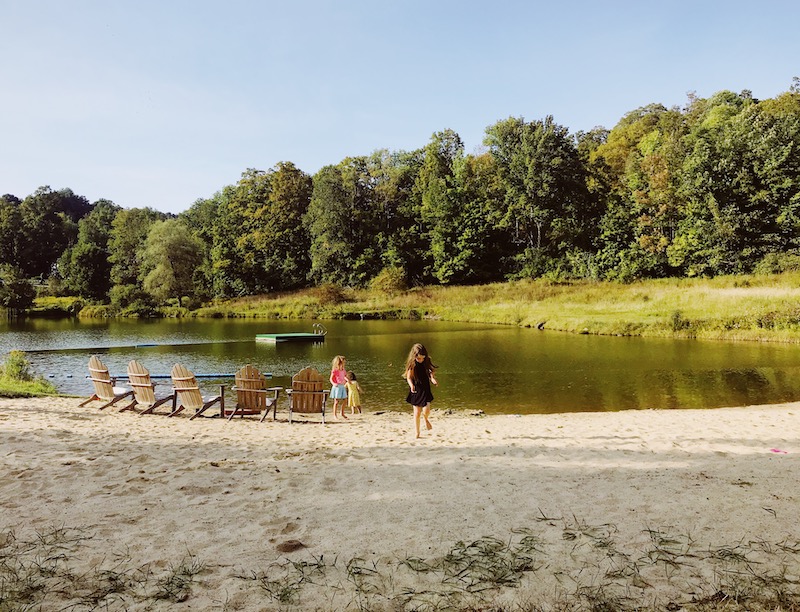 Once more to the pond.
Once more to the pond.Homeschooling began and was scary, and then delightful, and then ordinary and soothing. I made new homeschool friends at local events and we made conversation about expectations, and savoring the little things, as is our way. I started a newsletter to write about homeschooling in more detail, so as to avoid attaching too many ribbons to my blog’s (already fitful) kite. You can sign up for that newsletter in the little box on the righthand side of this blog.
It is monthly and there has only been one issue, so you can catch up quickly.
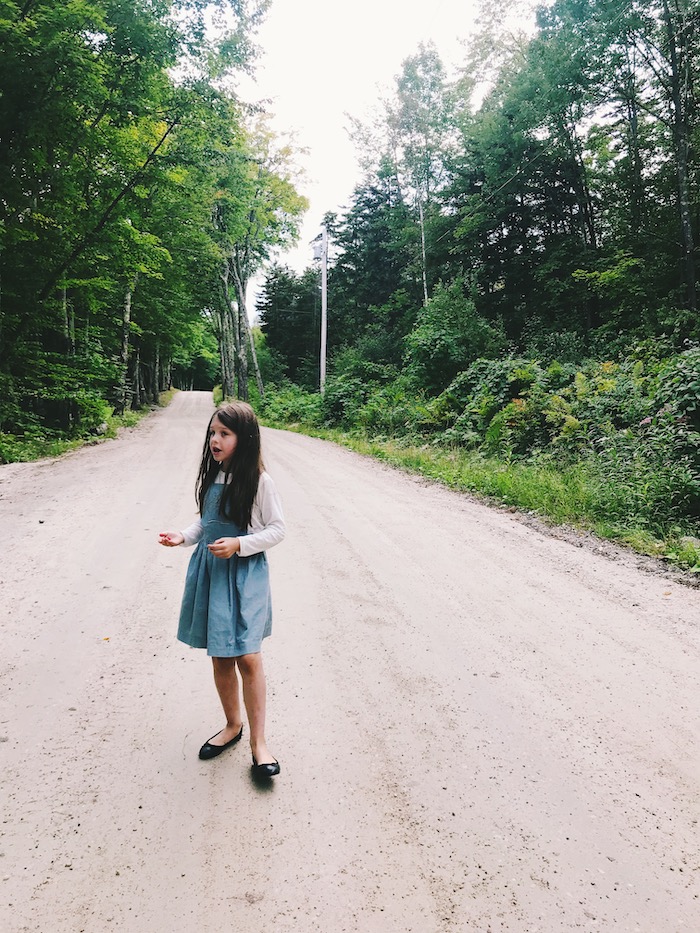 Out for a walk.
Out for a walk.Presidential candidate Andrew Yang has suggested the idea of a monthly universal basic income. The banality of those words universal, basic, income cause it to drift rather quickly into a divisive debate that you might find yourself arguing–does $1000 really matter? Wouldn’t all costs just become $1000 more expensive? Would we find raccoons lining up to demand their $1000 and if so, what would we say to them? And so on.
But behind Andrew’s theory is this wonderfully complex double helix idea of unobserved labor and the labor that is now, or will soon be, in the hands of robots (he mentions retail, customer service, food prep, and transportation as soon to go). One strand of the idea is the headache of society, a word that strikes fear in every political heart: unemployment. The other strand is the unobserved, unpaid labor that we rely on: merry volunteer coordinators, reliable child-rearers, cheery bake sale makers, careful wikipedia-entry custodians.
There is a delicious savor to unobserved labor, it silkens and soothes society’s function, it is the very butter to our brownie mix. It is behind every Why do you do this? -Because I want to help. We see it, of course, but how often do we not see it? And how does the person behind the unseen feel, from time to time? That is the intriguing prompt buried in Andrew’s proposal.
And it was on my mind when I considered that of the thirty dinners hath September, I made 26 of them for our family of five. I say that not as a compliant, but rather an observation of something that was not noted on my calendar and may therefore go unreflected upon. We went out to eat three times, each was a spot I’d meant to bring the family all summer: pizza by the pond, fried clams by the river, and a fancy meal on the patio behind a hotel in town.
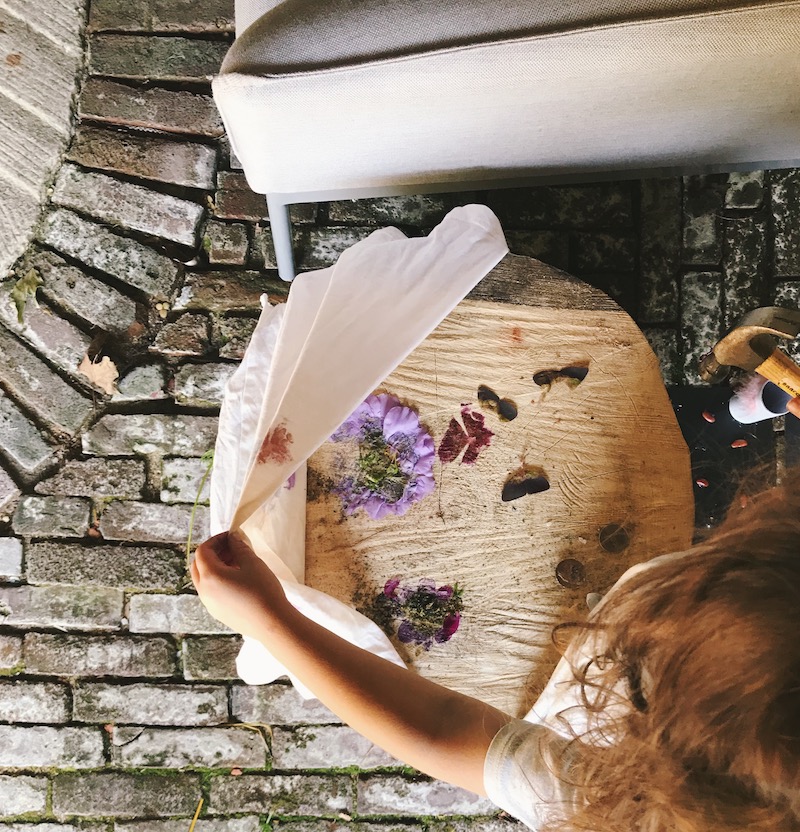 Hammering petals into fabric.
Hammering petals into fabric. -
numbers person
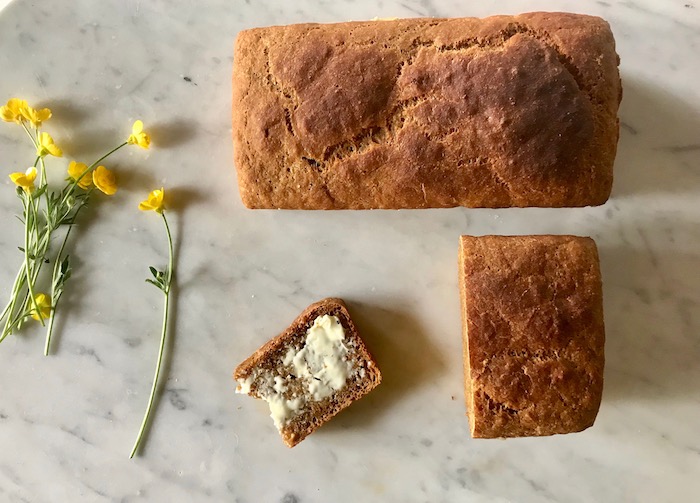
Do the categories word person and numbers person truly exist? Are they separate kingdoms as in the genially absurd classic novel Phantom Tollbooth?
I always liked math in school and never questioned my competence in it. In particular I remember delighting in the requirement to circle your answer, lest it got lost amid the scribbled equations. There was this sense of the question–what if you had the right answer, but then you wandered away, and ended up circling the wrong one? The mysterious revolution–you were right, then you were wrong, but then you were right after all. It felt intimate, and I loved that part.
But I feel like a natural words person. Was this feeling assisted by simplistic duality of a printed piece of paper carrying my ACT score in which I scored higher on English than Math? Perhaps.
But there is too the fact that I do not think in numbers, nor do I puzzle over them, nor do they seem to call to me. Not in the morning, or the night, or the middle of the night. I do not so much miss them, but I do think it would be incredible to encounter numbers so familiarly that they had essence and color, as autistic savant Daniel Tammet recounted in his book years ago, Born on a Blue Day. When I make a list of human experiences I hope to have in heaven, that is top five on mine, absolutely.
Anyway, as a result of some of these things, I often puzzle over how to invite numbers generously into my children’s world. My approach to this is to read about it (ha). Basically I’m hoping to get inside the head of a numbers person so I can properly convey that magic to the girls. Lately I’ve read several books by the mathematically inclined, like A Mind for Numbers, and Surely You’re Joking, Mr. Feynman.
So when my friend Katharine recommended the new The Weil Conjectures about math and the genius siblings Simone and André Weil (pronounced “vey”), I immediately asked my library to order it.
The book is one part reminisce of the author Karen Olsson’s own brief love affair with math, a sprinkling of the writings of various mathematicians (all delightful!), and one part biography of the Weil siblings—Simone, known among Christians and philosophers for her spiritual writing, and André, unknown to me, but a brilliant mathematician.
About one of the historical mathematicians, she writes:
Poincaré characterizes math as practically a form of spontaneous combustion, “the activity in which the human mind seems to take the least from the outside world.” As such, he says, it ought to tell us something about the essence of thinking.
It is very much a genre-bending book, with historical notes blended with personal ones, and fictitious scenes recreated based on fact. I particularly enjoyed Olsson’s reflections on her emotional experience with math…
But after more than two decades, if anything my dalliance with math seems just that, a past love, one I remember with nostalgia and the kind of echo feeling that adheres to the memory of an old romance.
Also, at nineteen, so much is up in the air, open to question, unreliable. I think part of what I like about math was simply that it seemed like a sure thing, as sure as a thing could be, a solid mass of true and rigorous and irreproachable knowledge that I could grab like a pole on the bus.
Because I previously only knew of Simone Weil as a Christian spiritualist, I was initially surprised by how lightly Olsson dealt with her spiritualism in the book. But as she reveals the intensely complex and troubled character of Simone, I began to understand why encountering her spiritual writing revealed only a fraction of this woman.
One thing I’ve taken away from my reading is the sheer delight that mathematicians take in the question. Never mind the answer. It’s the question, and the possible solution, and routes to the possible solution, that are most delightful. The Weil Conjectures is most engaging when recounting Simone and André’s letters wherein Simone asks again and again for him to explain the work he does, the math he puzzles over, and he finally does. She does not understand the explanation, and she knew she wouldn’t, but his answer has been recorded for history, for us, nonetheless.
-
a rocks and minerals party

We were making a pavlova—that wonderfully messy dessert that looks like a dried cloud on your baking pan, fingertip crunchy on the outside, soft and marshmallowy on the inside. The pavlova was for friends who were coming for dinner that night, but as we made it—whipped the eggs whites in the thundering mixer for minutes on end—thoughts turned to cake in general, and then desserts on the whole, and we began to discuss the type of birthday party for which a pavlova would be the perfect cake. It looks likes a cloud…a rock…a mineral. And there we had it, our theme for the collective birthday party for the two older girls that summer.
The rocks and minerals theme went exactly as far as thus:
+ jello made with chilled hibiscus tea that shimmered with gemmy iridescence. We pompled this with rock candy bits that looked amazing; and promptly melted into puddles once outdoors. The kids didn’t notice but I wouldn’t recommended the additional step of pompling to you. I would recommend the tea jello—I added some sugar to the chilled tea, the kids loved the color and I could use what I had in my pantry tea cupboard.
+ favor bags: one golden rock candy swizzle stick, one geode for cracking open at home, and a little bag of purple rock candies.
+ a table strewn with our collection of rocks, and a rocks and minerals handbook, plus crayons and paper for those less inclined to fling themselves into ruckus group games, one of which seemed to be cheerfully shouting hello? hello! at each other for ten minutes.


The rest was very simple–play as you wish, run around outside, let the moms gather on a picnic blanket to chat in that sleepy afternoon way that they do, let the babies trip in the grass, let the older brothers look bored, munch on handfuls of white cheddar popcorn, spill pink lemonade, sing, sing twice because the three-year-old was on the couch with a fever and felt terribly left out.
Eat pavlova colored with sedimentary lines of food coloring and sharp pink raspberry sorbet, open presents. Go home.
Do you open presents at your birthday parties? When we were in Boston it had largely fallen out of favor. The gifts were typically huddled in the corner to be opened after the party, almost as if we were collectively embarrassed by their grandness. But I remember loving that part of parties as a kid. I loved seeing the different things my friends would receive. It was like wandering the aisles of the most personalized shop I could imagine. And I couldn’t wait till they opened my present and I could bask in the joy of believing I had given the perfect gift.
So, we do it now. The kids gathered into such a tight cluster, I could barely see what was happening, but I could see the smiles of pride on the giver’s faces as theirs was unveiled because they would look up and around for a moment, as if to catch the spotlight they were sure was searching for them.

My favorite pavlova recipe, from Repertoire by Jessica Battilana. Making a pavlova makes one feel like a magician master of substance and sugar.
For the meringue:
1 cup granulated sugar
1 tablespoon cornstarch
3 large eggs, separated
Pinch kosher salt
1 teaspoon lemon juice or white vinegar
1 teaspoon vanilla extractTo make the meringue: Preheat the oven to 250 degrees and line a rimmed baking sheet with a silicone baking liner or parchment. In a medium bowl, whisk together the sugar and cornstarch. Put the egg whites and salt in the bowl of an electric mixer fitted with the whisk attachment (or in a large bowl with a handheld mixer). Mix on medium speed until the whites hold soft peaks, then add 3 tablespoons of cold water and continue beating until the whites again hold soft peaks. Increase the speed to medium-high and add the sugar and cornstarch mixture 1 tablespoon at a time. When all the sugar has been added, beat 1 minute more.
Add the lemon juice and vanilla, increase the speed to high, and continue to beat the egg whites until they hold stiff, glossy peaks, 5 minutes more. Transfer the meringue to the prepared baking sheet and, using an offset spatula or the back of a spoon, gently spread into a circle about 8 inches wide, slightly higher on the sides and with a slight depression in the center.
Bake the meringue until pale golden, about 45 minutes. The meringue will have a crust on the exterior but still be soft inside. Turn the oven off, crack the oven door slightly (stick a wooden spoon in the oven door to keep it propped open) and let the meringue sit in the oven for 1 hour. Remove from the oven and let cool completely. Once cool, run a spatula under the meringue to free it from the silicon baking mat or parchment and transfer to a large plate. The meringue is best made the same day you plan to eat it. If you prefer, you can make individual meringues; prepare two baking sheets, then spoon four equal-size mounds of meringue onto each of the baking sheets, for a total of 8 meringues. The baking time is the same.
I added a tiny bit of food coloring (the gel kind) to the mixer at the end, then swirled in more food coloring with a toothpick once the meringue was on the pan, just before baking. The cake pictured above was the recipe made three times. I portioned all the ingredients ahead of time and mixed and baked the layers one after another. It fed twelve kids and six adults.
-
to market to market

On a sultry afternoon we arrived with homemade peppermint patties and chilled oreos sprinkled with rose petals and pistachios, an irritable three-year-old, a serene newborn, five hand-sewn felt purses, six hand-drawn cards, and two kids full of optimism. The cookies had to be kept cold. The baby had to stay in the shade. The three-year-old had to be kept away from the money box. It was a moment of balance.

I want, very much, to support my children’s entrepreneurial interests. I want to meet their requests to sell crafts / setup stands / make money all their own with a frank, open gaze that says “I hear you. What an interesting idea you’ve got there.” Kids can learn marketing, money management, product development, and the rich toolbox of manners like eye contact, smiles, and hellos all from a little small business exposure.
I also want to convey ideas like cost of materials, time spent, energy allotment, mom’s general sanity. If I say yes to this idea for our family, I’ll inevitably be saying no to other things along the way. Since we’re new in this town, Joe and I have taken the startup idea of “fail fast” to heart. Try new things quickly and find your favorites like an old local. So last fall when the seven-year-old told me she wanted to have a stand at the market selling art, I said hmmm maybe. This spring I looked up the market manager’s email and emailed her to ask about kid stands. Was that even allowed?
The market manager emailed me back to say they had one day per month when kids were welcome to setup stands and sell whatever they liked. Perfect! I could channel the energy but not sign our whole summer away.
After visiting the market a few times the girls settled on something they thought was deeply underrepresented: cookies. Plus they wanted to sell hand-drawn nature cards, and copies of a simple felt purse they had themselves and loved. We ordered supplies and wrote down costs. I emailed a friend to borrow a table and tent. Joe helped the girls repurpose a box into a sign. We dusted off the picnic blanket and chose some props. One child and I slathered our way through an “easy” peppermint patty recipe from Genius Desserts and portioned them into paper bags. The other child generously peppered rose petals, pistachios, crushed candy canes, and gold sprinkles on Newman’s Os.
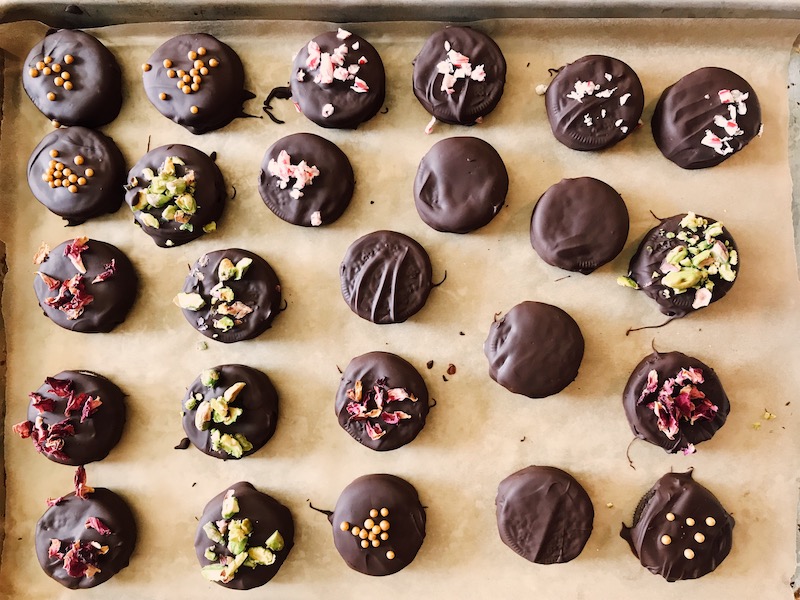
Had we had managed to make ten purses, we would have sold ten. But this was their market, not mine, and so we had five, and sold out in the first hour. One girl’s cookies sold faster than her crafts, the other had the opposite dilemma. Across from us a lemonade stand hammered together with a chalkboard listed a special deal if you bought both a cookie and a lemonade. Small tables lined the corners of the sidewalk, kids sitting on blankets demurely hawking rhubarb pie slices and ball jars hand-plastered with marbles.
 ^^ That’s the only photo I got with the purses, they sold so quickly / I was very busy sitting in the shade acting nondescript. Next time!
^^ That’s the only photo I got with the purses, they sold so quickly / I was very busy sitting in the shade acting nondescript. Next time!



Here’s the funny thing about these things: as an adult I focus on product (cost) and result (money). A good idea? You’ll make millions. Spend a bunch of time and barely covered your costs? Must be a bad idea!
But the girls focused on the people they talked to, the way the market felt, how were they were perceived by the adult customers, how proud they were that they never had to ask for help making change, and didn’t defer to us to answer their questions.
The money they made (after paying us back for costs) was quickly spent at neighboring stands. A woman down the way sells polished stones looped onto soft cords. The girls had been eyeing those for weeks.
So it was totally worth it. But I’m glad it’s only once a month.
-
Oatmeal confetti
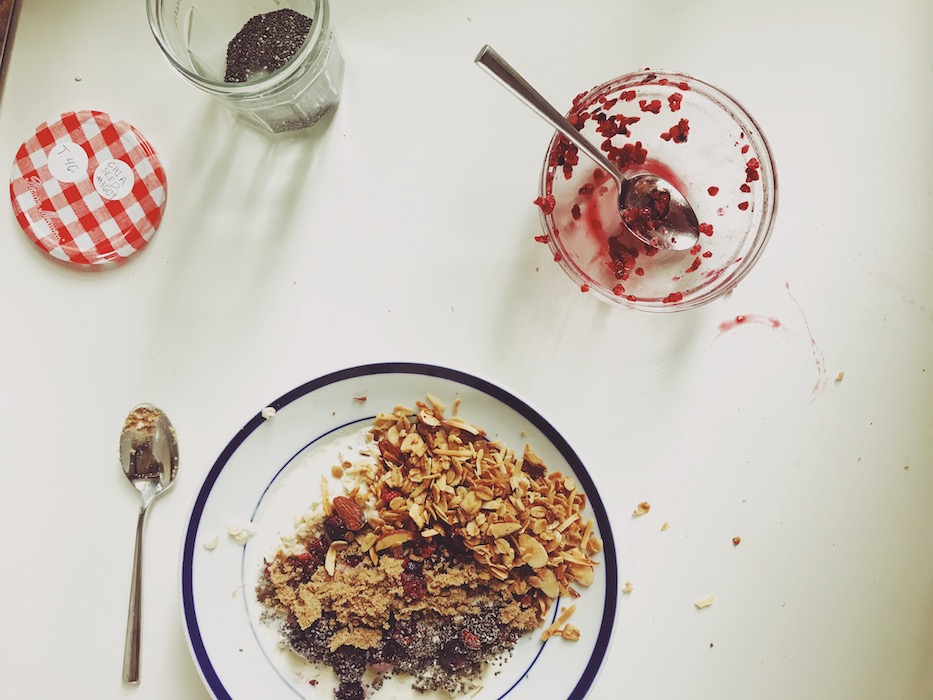
Once upon a time it really bothered me to see all the milk and floaty-melty cereal bits going wasted in my kitchen every morning. I didn’t like buying the cereal boxes, which seemed expensive, and the cereal seemed to fill the girls up for about fifteen minutes before they were hungry again. I wanted them to love oatmeal like I did but they were always complaining that I had mixed theirs wrong, made it too hot, let it get too cold. Goldilocks was feeling less like a fairy tale and more like a fable of my life. Maybe I should have tried suggesting walks in the woods while our porridge cooled. Maybe I could have tried calling it porridge.
Flinging caution to the wind, I stopped controlling their bowls. I put out frozen berries, chia seeds, a jar of brown sugar with a spoon, and heavy cream, and let them portion everything. The girls spent the first week heaping their bowls with syrup-level brown sugar. No commentary from me. The next week things seemed to balance out. Now they each make their own delicious bowl and, generally, eat the whole thing.
I also discovered if I used a big glass bowl I could mix two cups of oatmeal with a little over two cups of water and microwave it for four minutes to make the perfect batch amount every time.
When we go by the cereal seduction aisle we have a little routine where they examine the cartoon characters parading past and I say something distracted like, “maybe when we go on vacation.” Take into account the frozen berry mixes and I don’t think this method is saving us any money after all. But I do think it’s a better breakfast.
Once you are undeniably in charge of your own things like bills and phones and the ability to drive, you can take on out-of-control things like placidly overfilling your bowl with odd textures. With that in mind, here are two adult variations that I love to make for myself:
homemade granola, frozen berry mix, marching line of chia seed (the funny thing is I don’t like chia seed in smoothies but I love it as a sprinkle), heavy cream.

heavy cream to the side, sliced banana, coconut sugar (such a crispy flavor), chia seed.

-
the June garden
I just ate a lunch of cold chicken and pickles, dollop of dijon. All prepared one-handed because the baby wanted to sit with me. Cold, perfectly bitter coffee to my left, some leftover chocolate torte that I didn’t make correctly–the crust was like butter gravel–but no one noticed. There are at least five glasses of water strewn across the table.
Feels like it’s time for a June garden update.
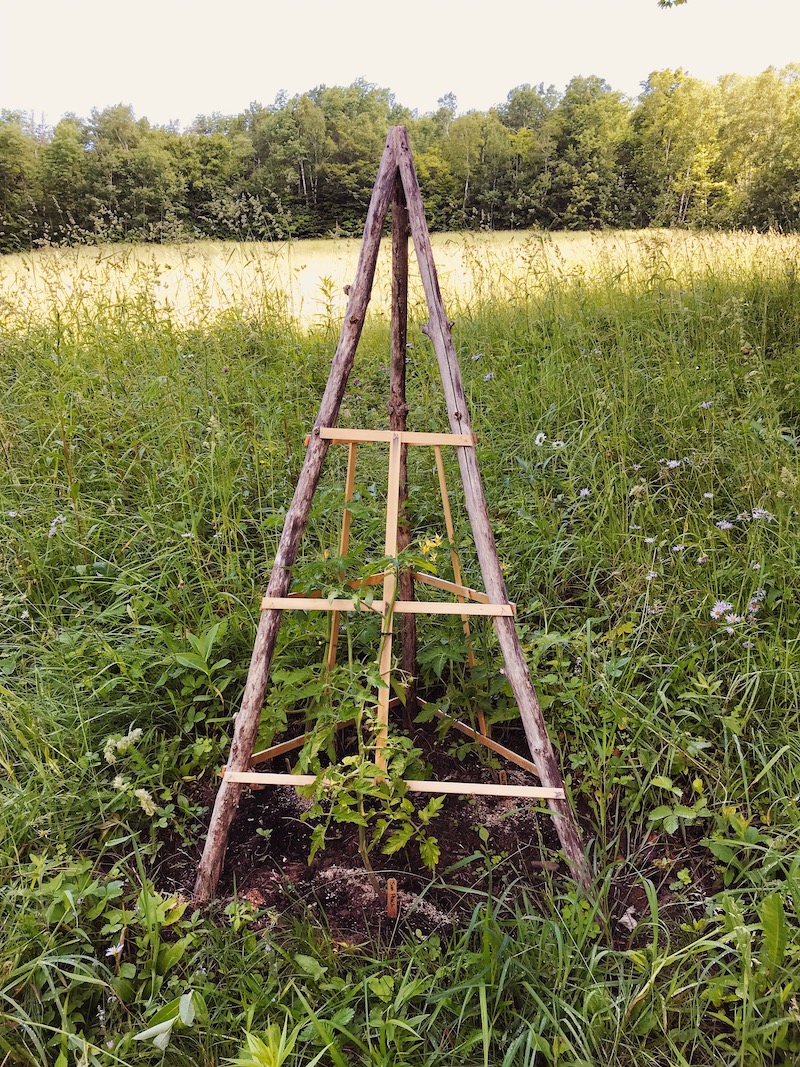
Maybe the girls will remember the first summer their parents gardened. When their mother invited them individually to see orange cherry tomatoes, as if one tomato every three days was enough to satisfy any appetite. When their dad marked the distance before planting the strawberry seedlings we got from the local parks commission. When the wild grass grew up so quickly around everything we planted that you had to tramp it down just to check on the plants.
When only two of the carrot seedlings came up, and none of the cucumbers.
I reseeded both for a second try; hoping for a very mild early October around here. I’m such a novice that I often read the back of the seed packets three or four times before planting, carrying a ruler with me to get the spacing right. I have two gardening manuals, one Vermont specific and one hardcover from my Maine gardening guru, Barbara Damrosch. I over-research the simplest things, it is my way.
I visit the hall of wonders at the farmer’s market. I cannot believe what they have. We have a single carrot sprout the size of a blade of grass and they are selling bundles of carrots for $3. “They’re probably using row covers,” my friend says. STILL.
-This is AMAZING, I say to one of the vendors.
-I think so, he says, pleased.
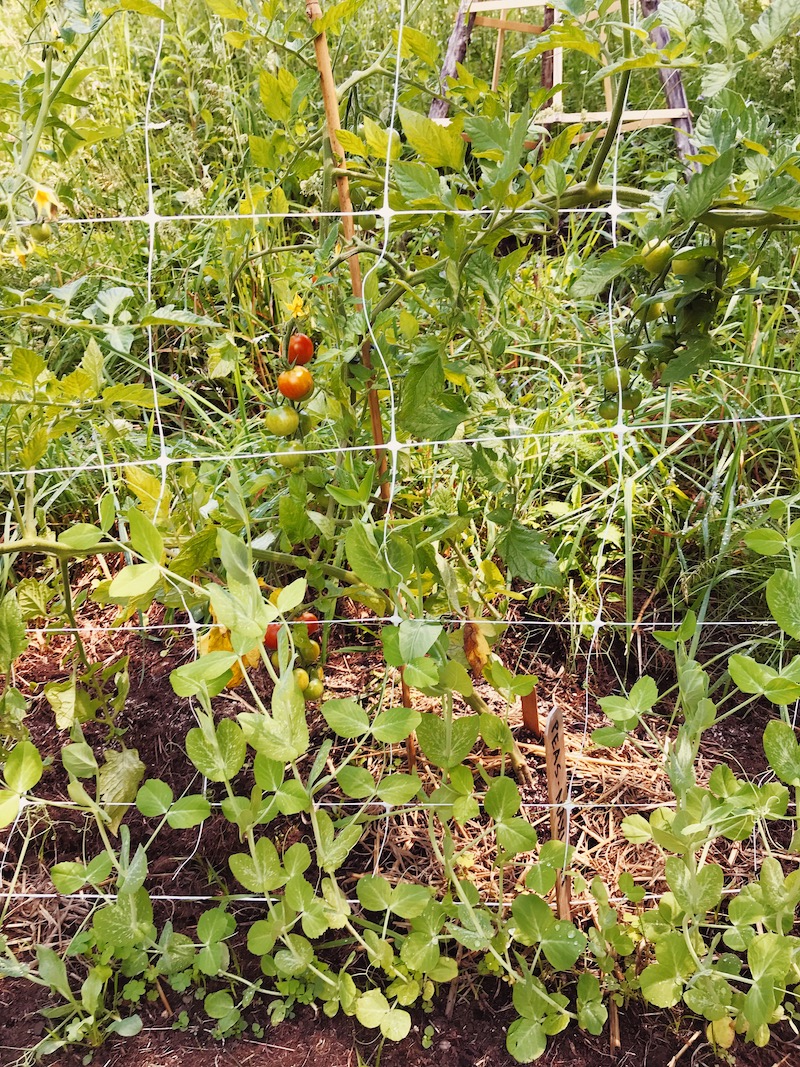
The peas haven’t given a single hint that there will ever be actual peas to eat, but the plants themselves are adorable gangly teenagers that Joe and I check on every morning. We find them entangled with each other and any wayward grasses that crossed their path, eager tendrils wrapped around each other’s necks. “Fair Romeo,” one whispers.
One variety that I picked out of the catalog for its garnishing ability has frizzly spastic threads, as if they brushed themselves with an electric hairbrush.
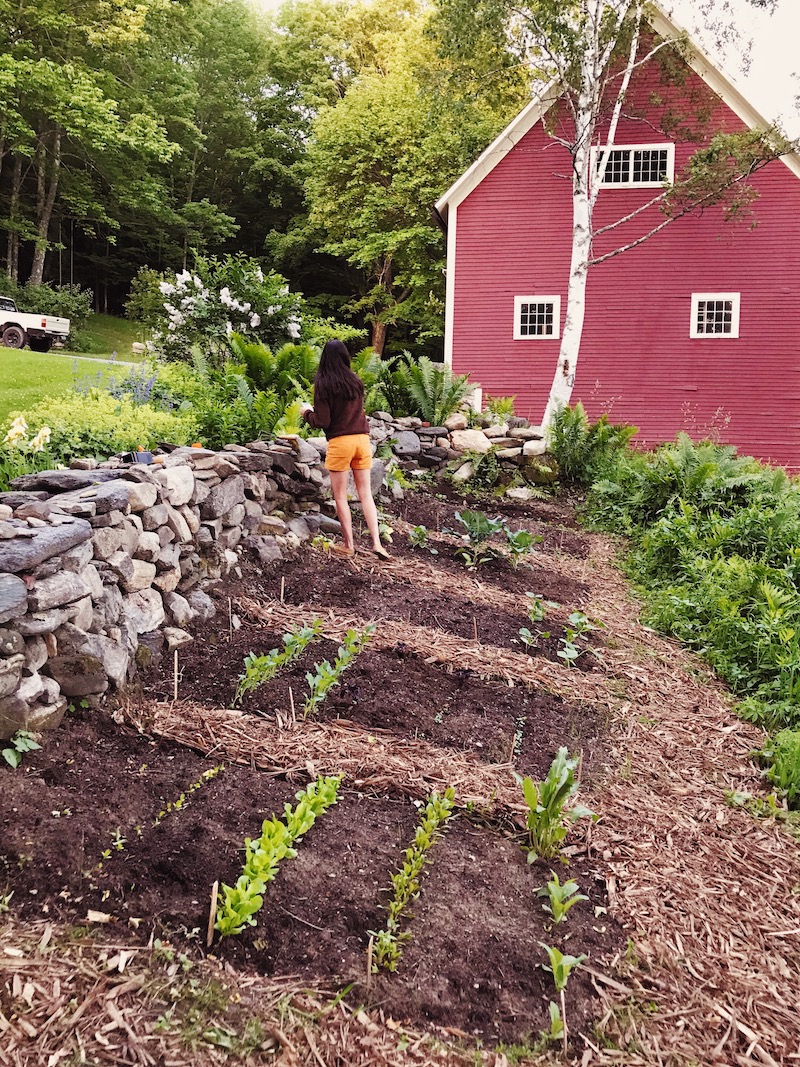
My favorite time to go out is in the evenings after bedtime. Bedtime is a light term here, meaning children have been tucked into their beds, but are likely to chatter and pull books off their shelves for the next two hours. In the morning when I wake them it looks like it rained books overnight; books drip gently off the edge of the beds and pool together on the floor.
The baby isn’t really into daytime naps, so when she goes down for the night a light, loving load lifts off my shoulders. I love to sneak out and pull weeds for fifteen minutes of actual productivity; frowning at what I think might be onion strands emerging at last.
Now I know why people fall for zucchini! It’s so cheerful and easy to grow. Their leaves crisp softly between your fingers like toast. I planted it for its blossoms but the seedlings have come up so beautifully I’ll probably end up with zucchini bounty, just like the rest of them.
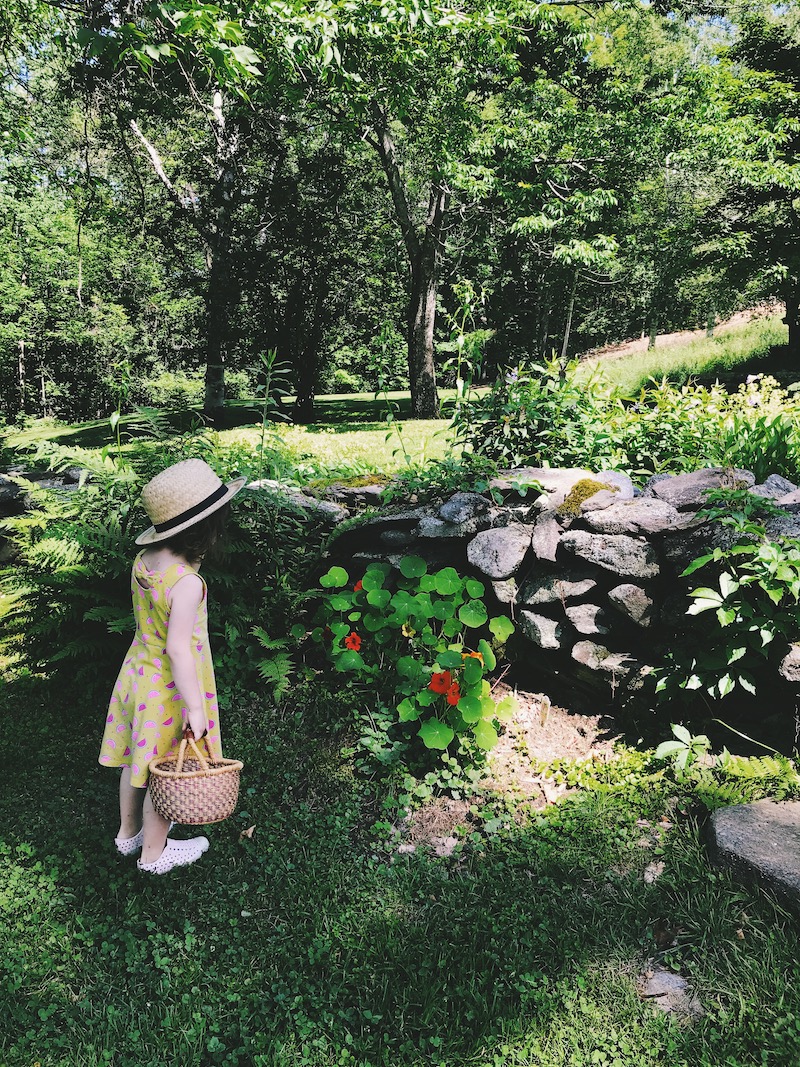
The three-year-old styles herself like a member of a local ladies pie society. She and I both love the peppery nasturtium blossoms we planted near a stone wall. It feels wild plucking the blossoms off the plant and munching the soft, brilliantly orange petals between your lips; like a horse eating clover.
The milkweed in the field is about to blossom and I’m so excited to see how the butterflies like it. They’ve been making do with the wilted lilac and the cheery but tiny purple catmint flowers (pictured here). I can feel my excitement for their satisfaction in the new nectar, that’s how much I’m looking forward to it.

common milkweed 
We planted a little strawberry patch that will give fruit next year, but all the wild strawberries we’ve since found in the fields have made it feel a little silly. They are scattered everywhere; I love hunting for them. A few patches have reddish ants that have claimed ownership of them. These ants greet you with a numbing-sting bite if you touch their strawberries.
But they haven’t found all the patches.
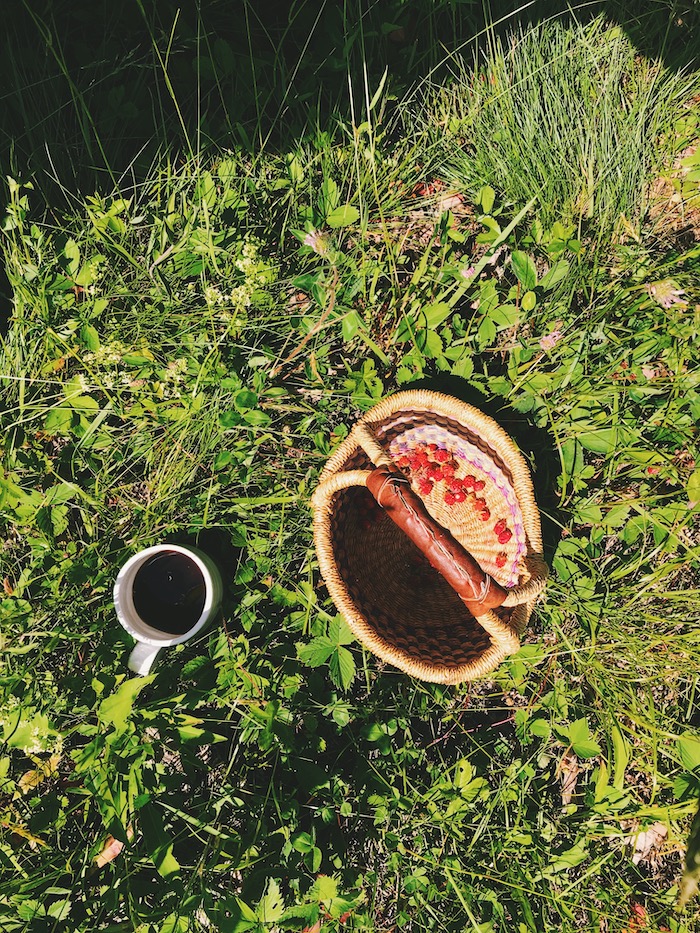
And there is a snake who loves to soak up sun on the path to the peach trees I bought on clearance at Home Depot last Fall. The peaches, though they were likely raised down south, have set out fruit after their first Vermont winter.
-
ann patchett’s book club
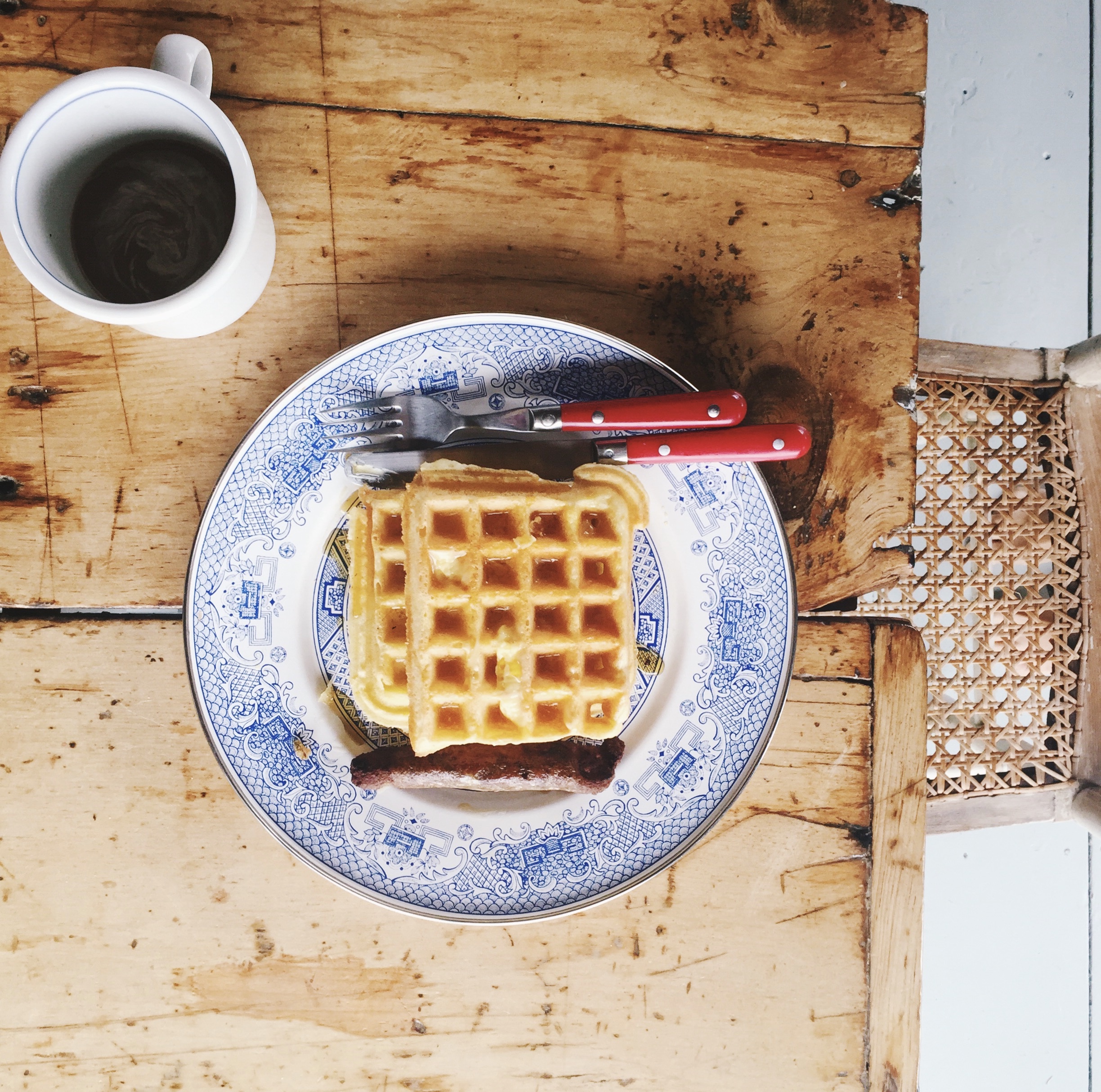
Eight months in, I’m so glad I joined Ann Patchett’s book club. The Signed First Edition Club ships a book to you each month, signed by the author. It arrives in a small cotton bag with a note from the book buyer about why she loved it. Sometimes it has a note from Ann instead, like April’s amazing galactic-friendship fiction, Lost and Wanted by Nell Freudenberger.
I once read a remark along the lines of: If you want people to buy your book, you better be buying their book. As in, if you believe in books, buy books.
And after thinking about it for a while I decided I could commit to buying a new book each month. It is a bigger commitment than one would think. Somewhere in the frame of $30 a month puts it just under our daily coffee bill (we also prefer to get beans by mail subscription. Ah, the country life.).
It’s run out of the bookstore Ann owns in Nashville. Each month the new book shows up in my post office box. Our town gives us this post office box for free because the Postal Service doesn’t come up our road. Initially, I resented this NEGLECT on the Post’s part, but soon I realized it was an enormous advantage, to not have to see your mail every day. Or only seeing it when you wanted to: as an occasion. It doesn’t make the bills less bill-y but at least it makes a stack of them to be looked through with some formality and attention. Ah the mail, I say to myself looking through them with magnanimous cheer. The magazines pile up too. And the notes. All in all, the haul is often satisfying.
Or it could be just the click of the tiny door, the dark key that the girls take turns using, and the chatting of pleasantries with the postmistress that feels nice.
Ann has a funny story on the store’s blog about getting the book club going. She used her power as a famous author-interviewer to get Tom Hanks to sign his books for the First Edition Club’s subscribers. She asked for signed J.K. Rowling copies for her members in lieu of getting paid an interview honorarium. I was very impressed by these stories. I can imagine Tom gently sighing as he signed the 600 copies she requested. Circle of publishing celebrity life, he perhaps muttered.
A few other perks: the idea of reading the book very first thing, a book you will likely end up reading eventually so you can participate with the reviews and accolades that pop up later. Maybe you’ll even notice in advance when the author comes to your town on their book tour. And you have supreme gracious lending rights: you can let a friend borrow it and almost guarantee they haven’t read the book yet.
Parnassus Signed First Edition Club
-
Spring
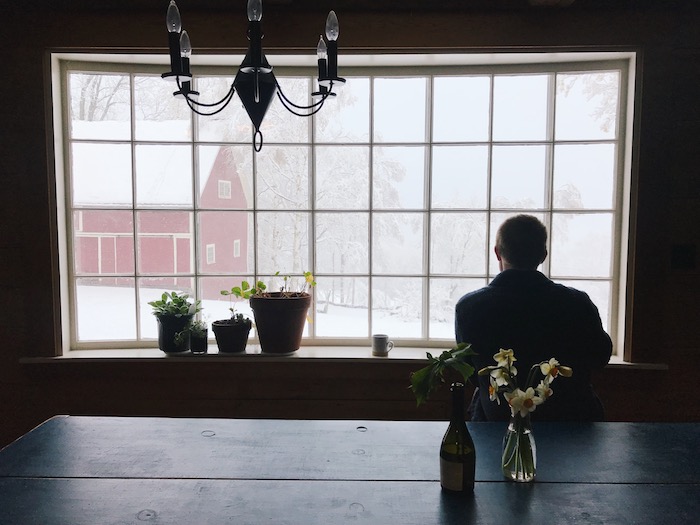
Hi! May I begin with a photo from yesterday morning: coffee and the startling snow? I messaged a friend, worried about her flowers, and she responded, they are shocked, as am I, but we’ll pull through. I loved that. Today the snow was gone and everything was greener for it.
I admit I’m having trouble getting back into the swing–the wooden tree swing–of writing here. The time constriction of life right now is very good for productivity in general, my official to-do list gets done because I only have about 60 minutes every day to do it. But other things that take and generate creative energy have been replaced by holding Esme and gazing at the ceiling, or holding Esme and reading a book, a Barbie Early Reader no doubt, that I really wish Alma hadn’t managed to slip into the library bag. And so on.
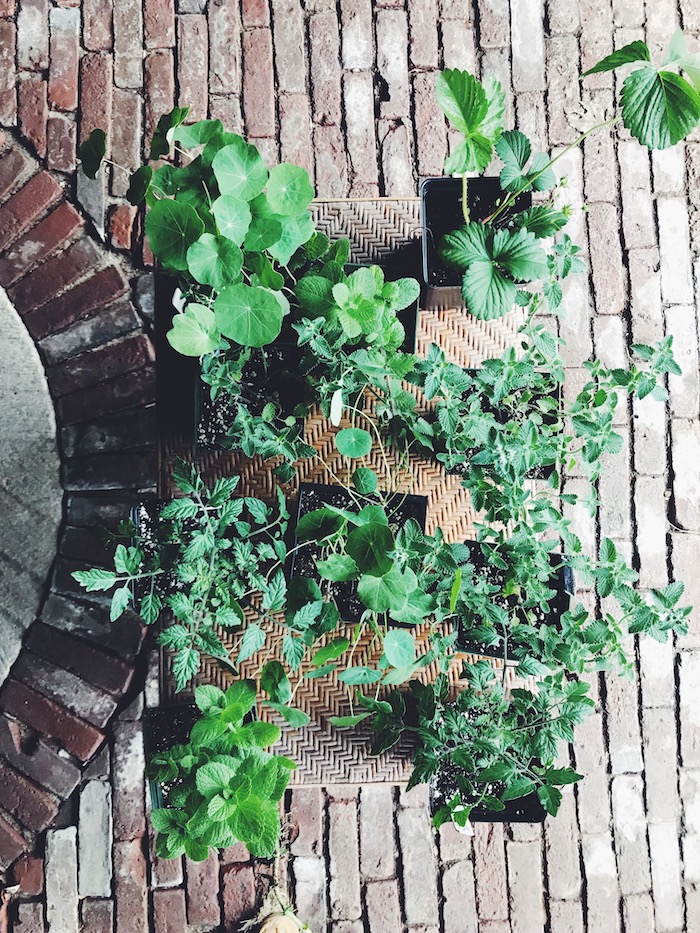
I’ve been thinking about this interview with the enchanting Katherine Paterson, author of many books including Bridge to Terabithia. Sometimes with reading to kids, I’m so eager for them to meet books that I fear pull them out too soon. Is there a ‘too soon’ though? What if you meet a character at age seven, and revisit her again at 12? Anyway, on that topic I was I intrigued to hear her say…
I do get worried when I hear parents bragging about their kid is so smart and reads so well that she’s reading Bridge to Terabithia when she’s 6 years old or 7 years old and I think, ‘No, no, no. You need happily ever after when you’re that age. You don’t need Bridge to Terabithia. There’s an emotional readiness as well as an intellectual readiness and you need to make sure that your kid is ready emotionally for the death of another child.
To be honest, the idea of “happily ever after” and children is becoming more and more foreign in today’s culture. We seem to be in a hurry to introduce every social challenge, every world socio-political issue as soon as possible, even as our children are raised with fewer personal responsibilities or chores and with less independence than what would have been allowed in previous generations. Thoughts on this? It’s something I think about a lot.
Another gem from KP on discussing books with kids: “If you know the answer to a question, then it’s not a question.” I love how that affirms talking over books with your children after they age into reading titles that you haven’t, and likely will never, read. The whole thing is worth a listen, I enjoyed it.
till next time xo
-
from the kitchen cabinet
I’m not sure what it is but lately, I find photography of childhood compulsive. There are several photographers and blogs that I follow only for their incredible ability to capture the exquisitely, painfully, fleeting moments of growing up. Most of them are women. Most of them are mothers. In the same way that a cup of coffee with a friend amid the chaos of your children running each other over with scooters around the kitchen table, these images seem to put their arms around me and say “me too. I see it too.”
One of these photographers is Ashleigh Coleman: three babies, two cats, and a husband in rural Mississippi. I feel lucky to share these photographs from Ashleigh as well as an insight into her feelings as a mother behind the lens. Her talent reminds me of the art-science demand of architecture: the skill to manage light and dynamic, the patience to let the story arrive, and the craft to invite grace into the moment.
I have many favorites among these images, captured on a medium format Hasselblad camera, I’m sure you’ll find yours as well.
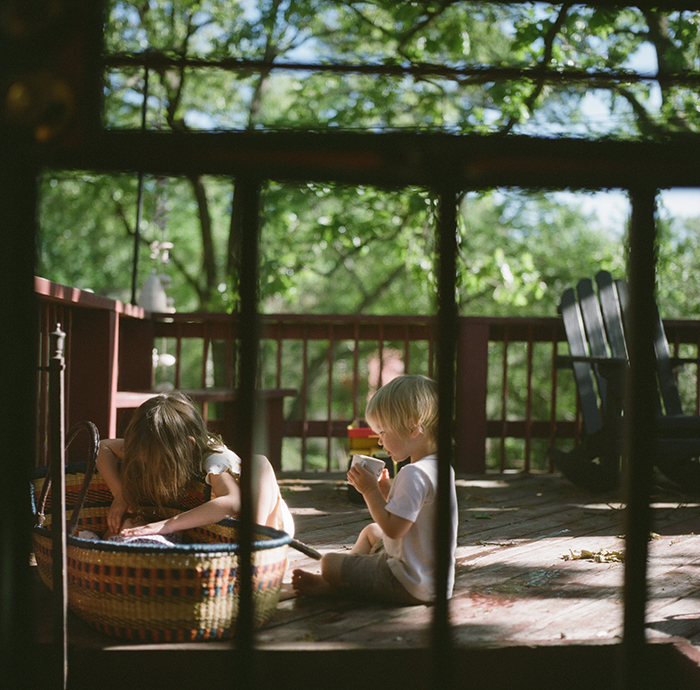
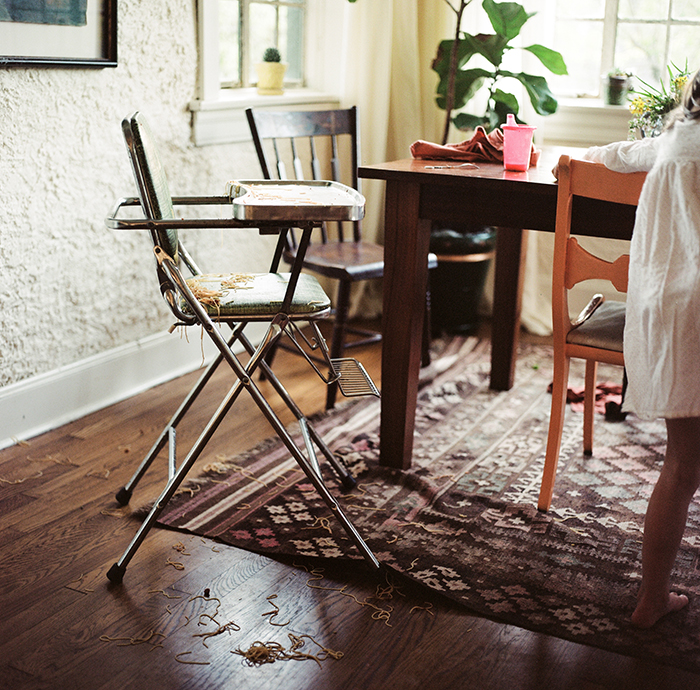
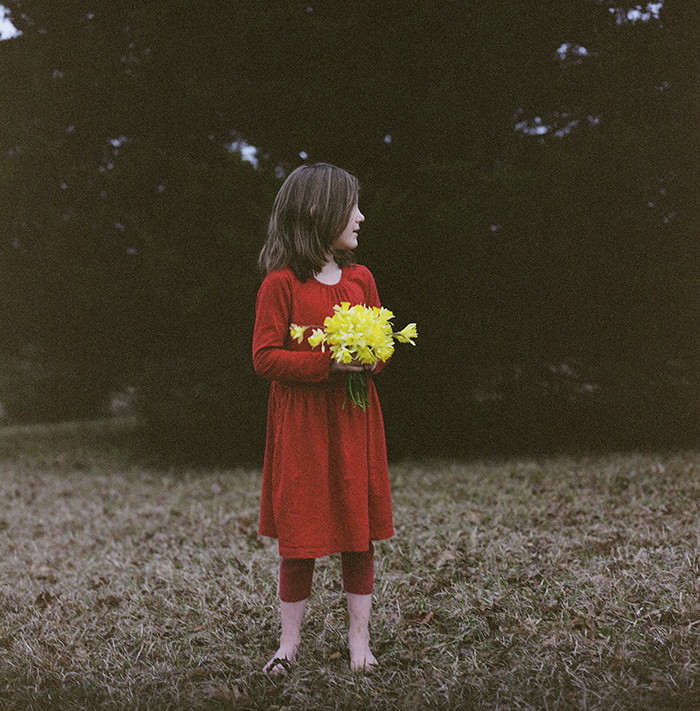

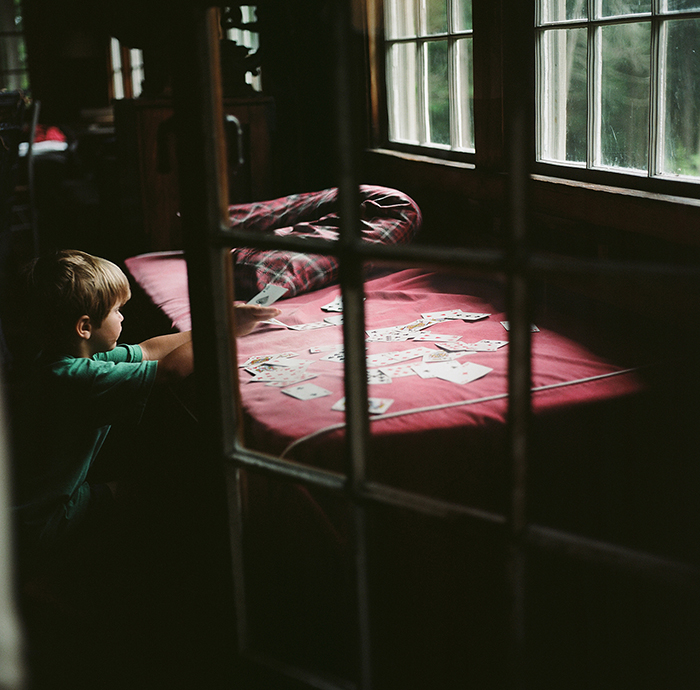
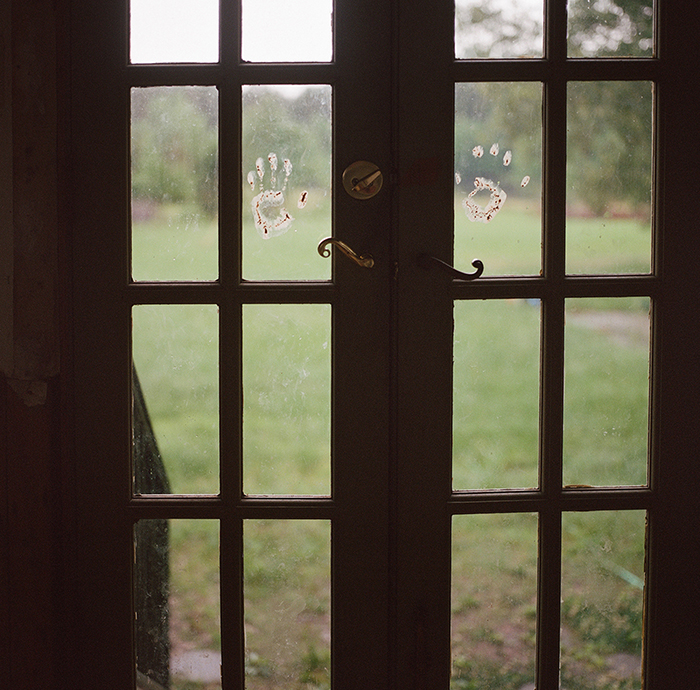
From Ashleigh: For whatever reason, I internalized a model of ideal womanhood as one blissfully fulfilled by responsibilities as a mother. She bakes cookies. Decorates winsomely for all holidays. Plans elaborate homemade birthday parties. Spends hours playing games.
So what if I thought that was the type of woman I would be? Only to discover I am not.
The reality is that everyday mishaps feel shocking. Noise threatens to unglue. Baking rarely occurs. I am terrified of being used up, of losing myself, of not having coherent adult thoughts on world issues, whatever that even means.
Yet. Yet. These are my people. Here. In front of me. Now.
In this short—so older people tell me—intense season of life, one thing I ponder is how easy it is to view children as a herd—hooves always tromping, voices articulating, bodies gesticulating. Mercifully, meditatively, using medium format film gives me room to see the vistas, the light; maybe not in that exact second, but a month or two later, when I look at the scans. It allows me to see individuals with burgeoning strengths and foibles and independent thoughts.
My internal landscape also quiets when I am aware, simultaneously, of the chaos and the reality that this scene is fleeting. They are growing, daily; a fact that shuffles into the background during the monotony of redundant days. When I pause to compose a photograph, in that stillness, before the shutter is released, much need perspective charges into the horizon. Humor arrives.

